
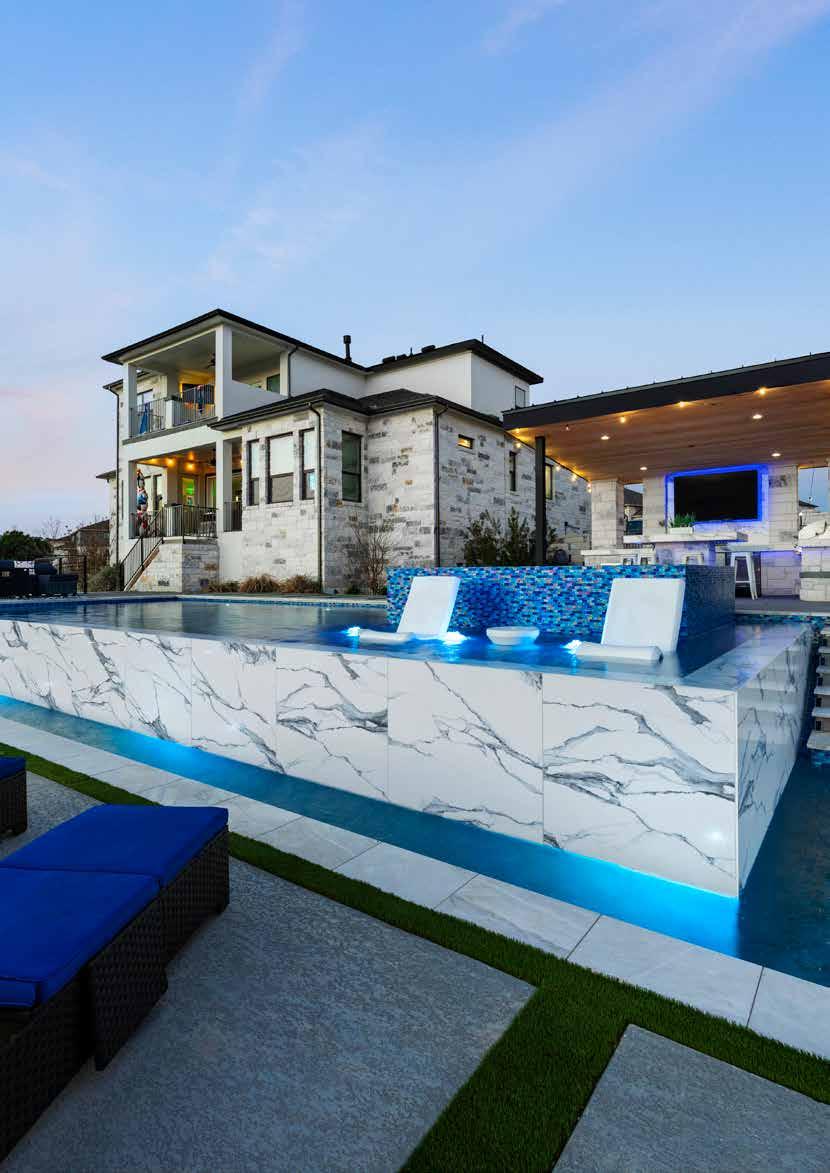



Industry-renowned designer Bo Barnett explains how the design trend of large porcelain panels is taking off.

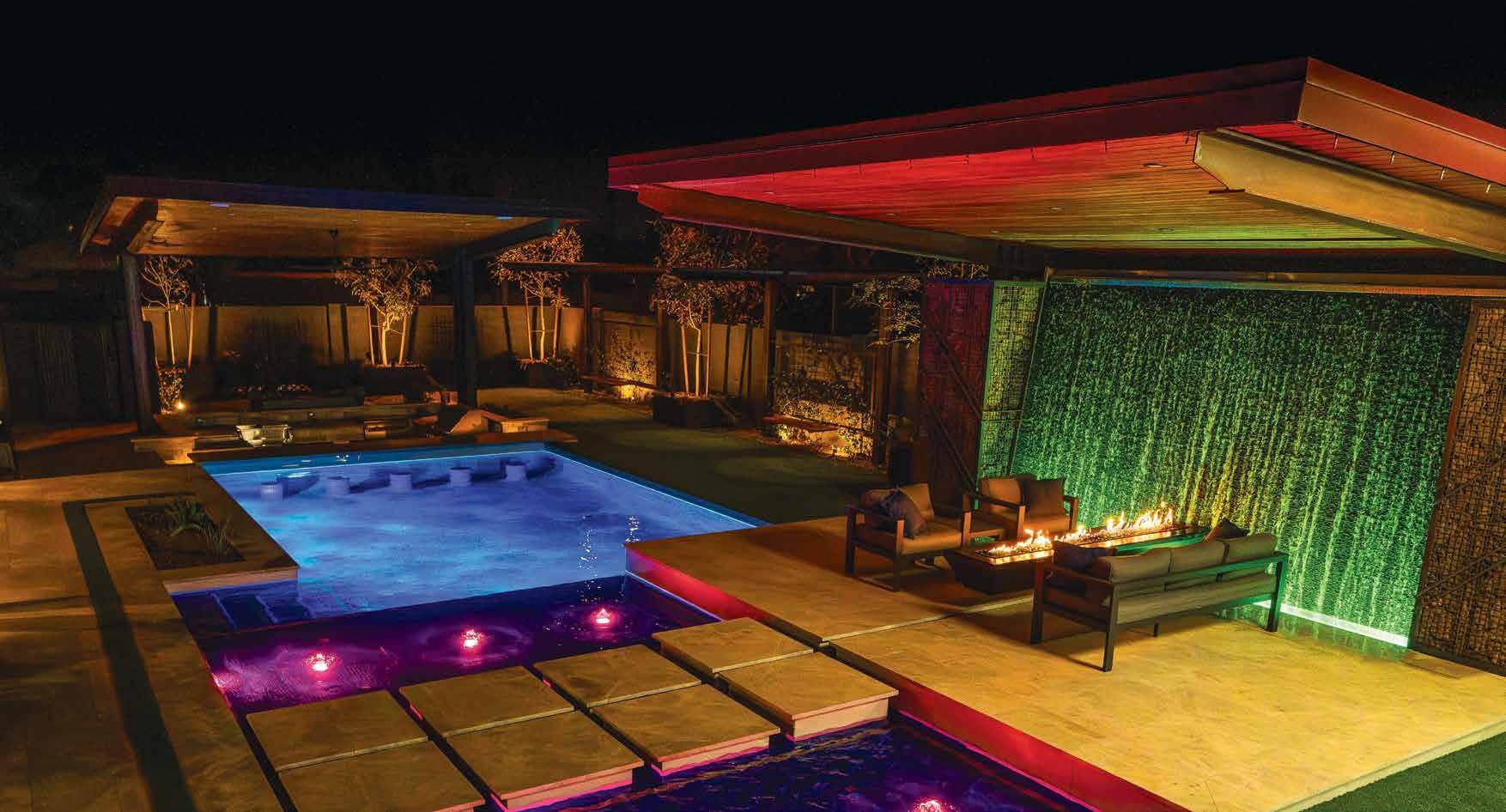

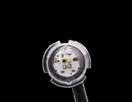

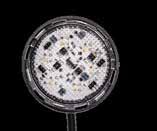


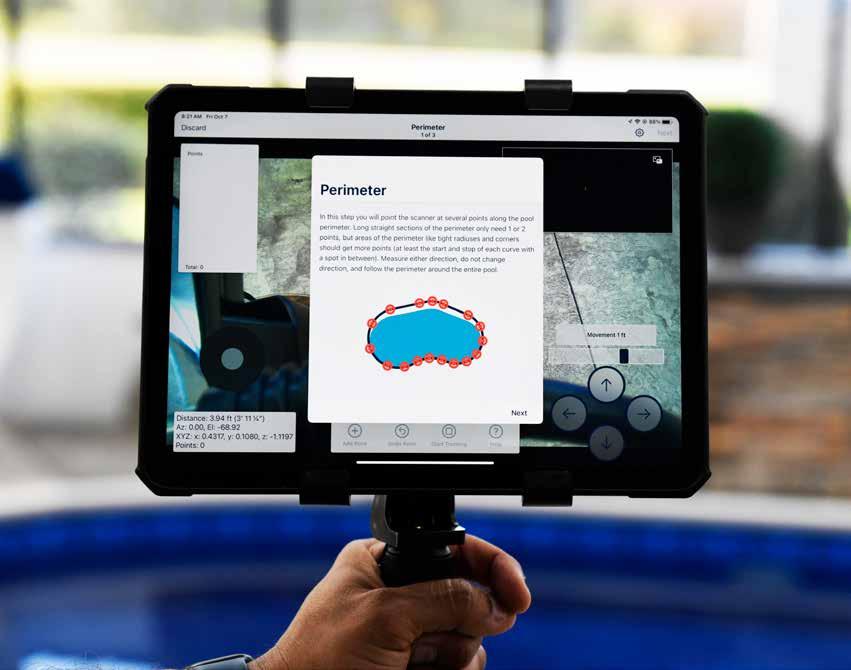
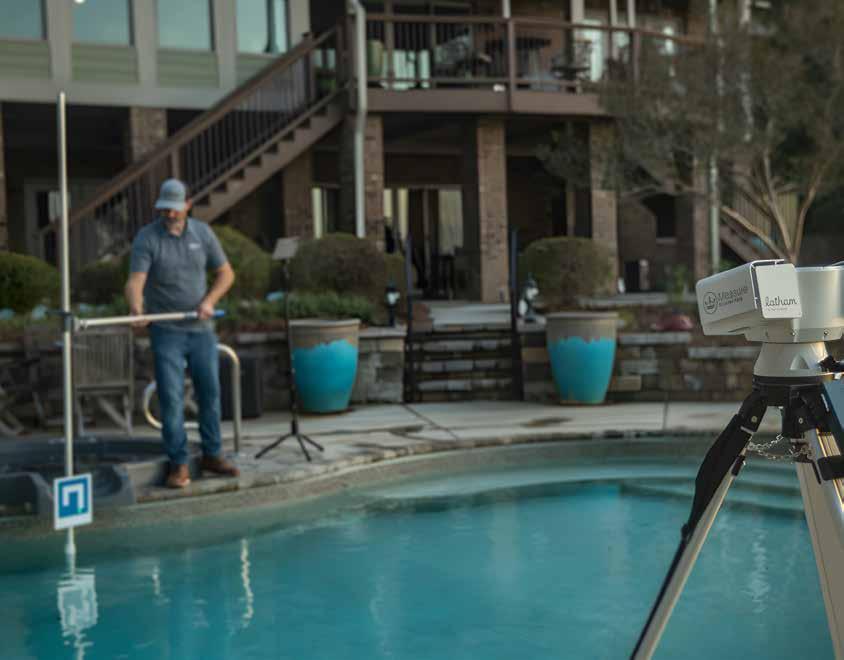


Introducing Measure by Latham - Measure safety covers and liners in minutes, not days, saving you time and money with accurate results. Less manpower, fewer revisions, reduced wait times for quotes and orders means scaling up your business has never been easier. The future of measuring is here!

Order today by contacting your Latham customer services representative, submitting your order through lathamlink.com or by calling 800-833-3800.
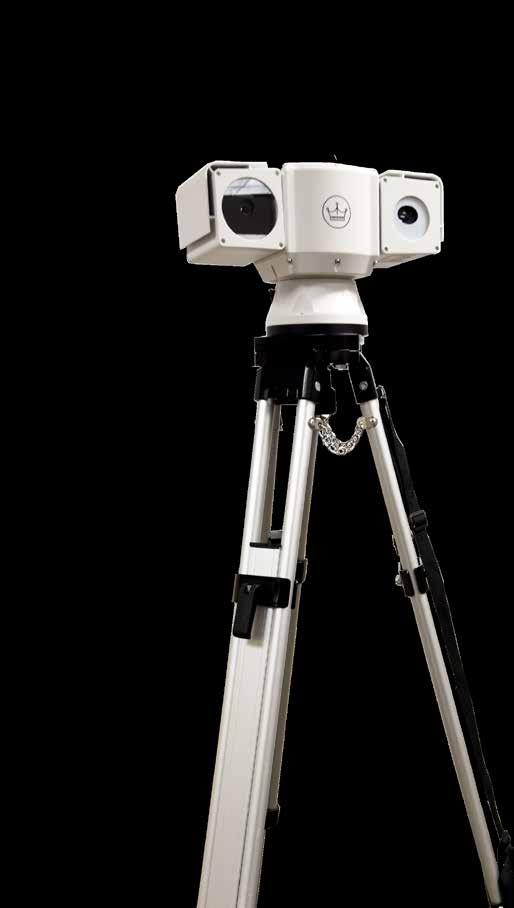
Fall marks a shift in rhythm for our industry. While the pool and spa business never sees a true “off” season, this time of year brings a different kind of energy. With the busy time of the year winding down most pool pros are taking a well deserved breather for the next few months until the madness ramps up all over again.
I’ll be frank with you, this year’s been slower than most. The rush wasn’t what we’re used to, and everyone felt it. But here’s the truth: this industry has never been about standing still. Even in tighter times, we keep finding new ways to connect with homeowners, spark their excitement, and remind them why pools and spas aren’t just luxuries — they’re lifestyles.
That’s the challenge and the beauty of being in this business. When demand cools, we get creative. When the pace changes, we adapt. And when others hesitate, we find the opportunities that keep us moving forward.
For me, autumn has always felt like the fourth quarter. There’s still plenty of game left to play, and it’s the perfect time to evaluate how the season went—where we succeeded, where we stumbled, and how we can finish the year strong. These months offer us the opportunity to take a breath, review our goals, and refocus on what really matters: delivering value to our clients, growing our businesses, and supporting the teams that make it all possible.
A s always, Pool Magazine is here to spotlight the very best of our industry. In this issue, you’ll find coverage of groundbreaking designs, profiles of leaders making an impact, and insights into the products and technologies that are driving change. It’s a season of reflection, yes—but also of inspiration and forward momentum.
Warmest Regards,
Joe Trusty Editor-in-Chief Pool Magazine
Founder, CEO & Editor: Joe Trusty
President, Associate-Editor: Marianne Trusty
Director of Marketing/Sales: Carol Gigliotti
Contributing Editor: Marcus Packer
Contributing Editor: Alise Everton
Production Editor: Julie Hamlin
Cover Photo: Photographer: Ethan Cooper Photography

In-House Photographer: Jimi Smith
Staff Writer: Susie Cuebas
Contributors:
Advertisers: AquaBlu Mosaics, Aquamatic Cover Systems, Basecrete, Beatbot, Diamond Spas, GENESIS, Hammerhead Aquatics, H2Flow, Latham, Master Pools Guild, Natural Chemistry, PAL Lighting, Pentair, PHTA, POOLCORP, PoolContractor.com, PoolMarketing.com, RENOLIT ALKORPLAN, Riverflow, United Aqua Group, Viking Capital
Lauren Broom, Brad Holley, Jamie Brinkman POOL MAGAZINE - PO BOX 278 - Pilot Hill, CA 95664 www.poolmagazine.com | info@poolmagazine.com




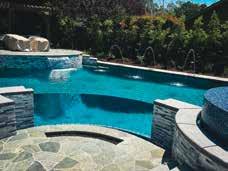

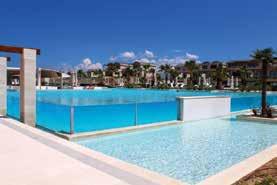





THIS MARKETING PLAYBOOK CHANGED EVERYTHING
Exploring how Pentair’s IntelliFlo3 VSF sets new standards for pool efficiency and easy service.
Marcus Sheridan breaks down the marketing strategies that were a complete game changer.
First of it’s kind study testing various bonding methods and swimming pool types.
BASECRETE: 3 NEW PRODUCTS POISED TO RESHAPE THE INDUSTRY
Basecrete Technologies brings three hot new products to market in Q4 2025.
Critical guidance for pool operators on preventing Legionella outbreaks in spas.
A CULTURE BASED ON QUALITY, LESSONS FROM
POOLS POOL INDUSTRY COUNCIL PUBLISHES STUDY ON EQUIPOTENTIAL BONDING
Joshua Buzzell of Regal Pools shares how culture drives quality in luxury pool design.
A last-minute client request to add a spa turned into a unique design opportunity.
WOMEN OF WATER, NEW INITIATIVE FROM PHTA & POOLCORP
Women of Water, a new networking group for female pool pros launches at PSP Deck Expo.
2025 INDUSTRY INSIGHTS & RECAP WITH TERI WILTSHIRE (MPG)
A look at the challenges pool builders faced this year and how they’re adapting.
THINKING AROUND COVERS & CORNERS: A PAC-MAN STYLE SPA WHY TODAY’S LEADING
With a catalog of clients that run a gamut of the ‘Who’s Who’ in luxury resorts, Deckology remains a go-to decking solution.

THE
Award winning designer Bo Barnett explains why large panel porcelain has become such a hot trend.
These nine different hot tub and spa brands had the hottest selling products in 2025.
Million Dollar Pool Design winner Brad Holley discusses how artisans changed the paradigm.
We discuss an acrylic slide failure that occured on a popular cruise ship.
Top installer Jimmy Reed and leading retailer Frank Vitori discuss all things Bisazza.
Most customers won’t tell you if they’re unhappy, they’ll just quietly quit you.
DESIGNERS ARE USING AI - HERE’S WHAT YOU NEED TO
A look at four different essential upgrades that immediately elevate any pool project.
We look at the leading AI models pool designers are experimenting with in 2025.
Pool Magazine presents our top picks this year in the pool heater and heat pump product categories.
Practical steps for pool professionals to build wealth and plan for retirement.

BY MARCUS PACKER | PHOTOS: PENTAIR POOL
When it comes to pool equipment, few innovations have reshaped the industry as much as variable speed pumps. They’ve cut energy costs, reduced strain on equipment, and helped pool owners embrace greener backyard living. Now, Pentair has taken things to the next level with the IntelliFlo3 VSF pump—a solution designed not only to move water efficiently but also to bring powerful automation and remote connectivity directly into the heart of the backyard.
To better understand what makes the IntelliFlo3 VSF pump such a game-changer for
both pool owners and service professionals, Pool Magazine sat down with Adam Key, Senior Product Manager for Pentair Pool Pumps. With more than 15 years at Pentair, much of it spent in new product development, Key has seen firsthand how pool technology has evolved—and why this latest-generation pump is such a leap forward.
For decades, single-speed pumps controlled by mechanical time clocks were the industry standard. They kept water moving, but at a steep cost. “Those time clocks were the
first and most primitive form of automation for pools,” Key explained. “Whenever that pump was on, it was running full blast, consuming a lot of electricity. That’s why we wanted time clocks—to cut costs and energy waste.”
Variable speed pumps introduced scheduling and energy savings, but they had one big flaw: the user interfaces were often clunky, difficult to navigate, and rarely updated by pool owners once the pump was installed. “Usually that schedule’s not changed,” Key noted. “It’s really not much of an automation tool if you’re never updating it based on seasonal needs or bather load.”
That’s where IntelliFlo3 changes everything. By adding Wi-Fi and Bluetooth connectivity, Pentair gave users an intuitive mobile app to set, adjust, and monitor pump schedules anytime, anywhere. “You could be on vacation, see a storm coming at home, and increase the filtration cycle to keep your pool clear—all from your phone,” Key said. The result: a pump that adapts to real-life conditions instead of being locked into a static program.
One of the IntelliFlo3’s biggest innovations is its built-in relays, allowing homeowners to control more than just water circulation. “It’s a two-inone automation system,” Key said. “It automates the filtration of the pool, but also gives you the ability to control other equipment.”
Lighting is the most common example. “Instead of flipping a switch on and off 10 times to find the right color, you just press red, green, blue, or party mode in the app,” he explained. Homeowners can also schedule lights to create nightly ambiance or coordinate them with backyard entertaining. “Most people want their pool to be enjoyed, but also want it to look great,” Key added. “Having your lights set up on a schedule makes it part of the whole backyard experience.”
Salt chlorine generators and heaters can also be tied in. “That salt cell is only operating when there’s water moving through it,” Key explained. “And with heaters, parents have oversight—kids can’t just flip it on and leave it running for hours, which can lead to sky-high gas bills.”
The IntelliFlo3’s control isn’t limited to just those three essentials. “Really, you can control anything that just needs to be turned on or off— booster pumps, ozone systems, UV systems, landscape lights,” Key said. “For simple pools that only have a couple of items to control, this is the perfect solution.”
For more elaborate backyards with multiple features—waterfalls, fire bowls, or extensive lighting setups—Pentair’s IntelliCenter system offers deeper automation. But for the majority of pools, the IntelliFlo3 delivers surprising flexibility without requiring extra hardware.
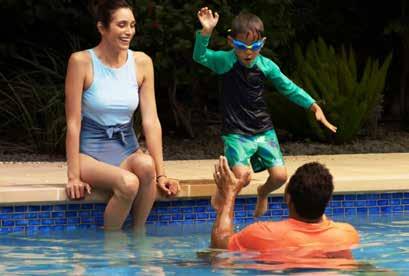
While automation is a big win for homeowners, service professionals may find IntelliFlo3 just as valuable. With remote connectivity built in, technicians can monitor performance, diagnose issues, and even resolve problems without ever rolling a truck.
“Because it’s an internet-connected device, servicers can see pump status, check if it’s running at the right speed, and fix problems on the fly,” Key explained. “You might get a notification that the pump lost prime—often because the water level dropped below the skimmer. Instead of sending someone out, you can call the homeowner and have them top it off. That saves time, fuel, and keeps your customers happier.”
In many ways, the IntelliFlo3 is more than a pump—it’s a control hub, a monitoring system, and a service tool wrapped into one sleek package. “It brings convenience and efficiency for both homeowners and pool professionals,” Key said. “It’s the first of its kind with true Wi-Fi enabled relay control, energy tracking, and remote monitoring—all without additional hardware.”
For pool professionals, that means fewer truck rolls, improved efficiency, and happier clients. For homeowners, it means lower bills, simplified automation, and peace of mind that their pool is being looked after—even when they’re not around.
In an age where smart homes are standard, it only makes sense that pools keep pace. With the IntelliFlo3, Pentair has made that leap, creating a smarter, more efficient, and more enjoyable backyard experience. The real takeaway? Smarter pools aren’t the future—they’re here now. And with IntelliFlo3, the pump that once only moved water is now moving the entire industry forward.

Read the entire article...

BY MARCUS PACKER | PHOTO: SUNSMART ENGINEERING
Earlier this year, the Pool Industry Council unveiled the results of what is being described as the most thorough study of swimming pool equipotential bonding ever conducted. Partnering with SunSmart Engineering and supported by the Pool & Hot Tub Alliance, the project set out to answer long-standing questions about how different bonding methods perform in real-world conditions.
The research spanned from April 7 to June 12, 2025, across nine residential pools in Central Florida. These pools were divided into three groups: those bonded with an #8 AWG single wire loop, those using copper reinforcement grids, and conductive pools with inline water bond plates combined with an #8 AWG wire loop.
According to John Antonelli, P.E., Vice President of Engineering at SunSmart Engineering, the goal was straightforward: “The main goal is to determine the effectiveness of the various perimeter bonding methods that are available to mitigate equipotential voltage differences between the pool, water, and the deck.”
Equipotential bonding ensures that all metallic components around a swimming pool are connected electrically so they share the same voltage. This eliminates the dangerous potential for electrical current to pass through a swimmer who might simultaneously touch surfaces at different voltages.
A s Antonelli explained: “If there’s any stray voltage, then the electricity could electrify certain parts of the pool environment, but not all. And if those parts are at different voltages, electricity could flow through a person who happens to touch between two surfaces, say touching the railing on the pool deck and the water at the same time. That’s what causes a shock.”
When researchers tested fiberglass pools, they uncovered unique results. Unlike concrete pools with conductive rebar, fiberglass shells are nonconductive. To bond these pools, metallic components such as stainless steel plates in skimmers are used.
Antonelli noted: “The only ones that were a little bit surprising were the fiberglass pools. Fiberglass pools by nature are non-conductive shells. … We couldn’t measure any equipotential voltage unless we actually applied that voltage directly to the pool water itself.”
This distinction highlighted the importance of proper fittings in fiberglass pools to ensure effective bonding.
The study compared three methods: single wire perimeter loops, copper bonding grids, and conductive fittings in fiberglass pools. “All three of them were effective in mitigating equipotential voltage from occurring when we induced a simulated fault,” Antonelli said. “If you really aligned all three up next to each other, the concrete pools with the equipotential bonding grid were the most effective at reducing.”
The results showed that both wire loops and grids worked well when properly installed, but grids offered the lowest measured voltage differences.
Fiberglass pools rely on inline water bonds or metallic fittings to connect water to the bonding system. In contrast, concrete pools use rebar and porous concrete as natural conductive paths. Antonelli explained: “You do get that electrical connection between the rebar and the water through the concrete. … We found that was second place, I guess, if you wanted to rank the effectiveness of the three.”
The study also connected to recent changes in the National Electrical Code (NEC). A 2023 interim amendment temporarily restricted the use of single wire perimeter loops, sparking debate within the industry.
Antonelli emphasized flexibility: “Contractors should be able to choose a perimeter bonding system that meets their design needs and accounts for any elevated risk of stray voltage in the area, whether that’s a copper grid, copper bond, or if you’re using some kind of steel mesh or rebar.”
Bonding issues are rarely the result of poor work during initial construction, Antonelli said. More often, problems surface later when equipment is replaced or wiring is modified. “If somebody comes in and they install some new equipment or they change their lights out, or they have electrical work done … that’s where I think some of these issues maybe pop up.”
He also pointed out the unevenness of inspections: “Inspections vary pretty greatly between jurisdictions. … Besides just a basic visual inspection of the bonding before it gets covered up by the deck, they should also be checking continuity between various points in the bonding system.”
Looking ahead, Antonelli suggested additional testing variables: “Maybe we go up to 240 volts to handle any issues that may arise coming from larger electrical equipment like the pump or heater. … Testing larger commercial pools which have a little bit of a different construction method might also be useful data to have.”
The study has been welcomed across the pool industry as a critical step forward. Adam Alstott, Vice Chair of the Pool Industry Council, called it “the most thorough study of swimming pool equipotential bonding methods to date.” Sabeena Hickman, President and CEO of the Pool & Hot Tub Alliance, emphasized that PHTA was proud to support a project that ensures access to “the highest quality data and best practices.”
In Florida, where the study was conducted, industry leaders also expressed support. Lyndsey Shock, CEO of the Florida Swimming Pool Association, stated: “Studies like this empower the Florida swimming pool and spa industry to be on the leading edge of pool and spa construction, engineering, and design.”

Read the entire article...
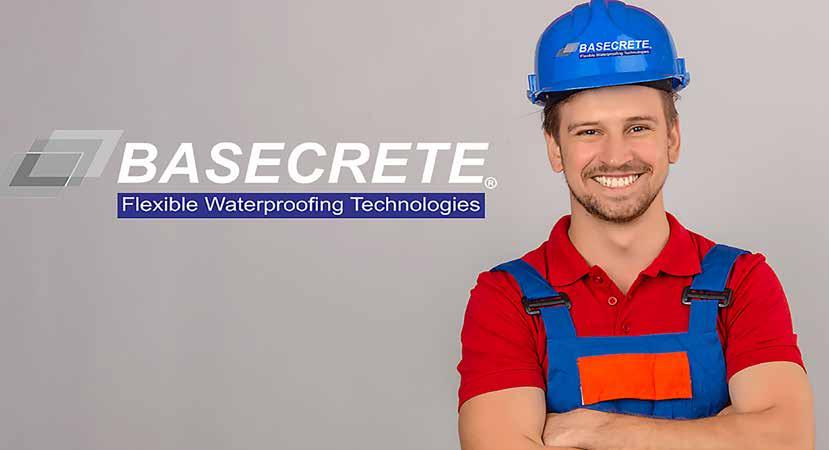
BY SUSIE CUEBAS | PHOTOS: BASECRETE TECHNOLOGIES
Basecrete Technologies has built its reputation on innovation in waterproofing and surface protection for the pool and construction industries.
Under the leadership of President Vito Mariano, the company has consistently sought ways to improve longevity, durability, and ease of application for builders and contractors. This year, Basecrete is excited to add three standout products to their lineup—NanoSet, Suede, and a new fiberglass mesh system within Basecrete Xtreme—each designed to address long-standing challenges in plaster, waterproofing, and bonding.
Basecrete Introduces Three Exciting
Mariano has spent decades
refining solutions for plaster and waterproofing. With multiple patents to his name, his focus has always been on developing products that improve performance while simplifying the applicator’s job. “I’ve been working with pool plaster, even with my patents, for many years. I know how the cement aggregate works inside swimming pools,” Mariano explained. His latest releases are a continuation of that philosophy—products that tackle recurring issues like pigment loss, permeability, callbacks, and labor inefficiencies.
Nano-Set is an additive formulated to reduce pigment loss, improve workability, and strengthen plaster
finishes. “It reduces the pigment loss of the plaster, especially the plaster dust. It allows more cream for workability, which minimizes callbacks from customers,” Mariano said. By reinforcing the plaster matrix, the product aims to eliminate common frustrations contractors and homeowners face after installation.
At Pool Magazine, we often check in with the top applicators and installers in the industry to gauge how new products are performing in real-world conditions. One of those voices is Jason Evans, a respected contractor who was previously featured in Pool Magazine for his work on the iconic Hard Rock Seminole resort pool project. Evans has also been an
early adopter of Basecrete’s latest innovations, and he praised Nano Set for solving longstanding issues in plaster performance. “So far, it’s been a great product. It hasn’t affected the workability in any negative way—some additives do cause issues, but this hasn’t at all. It really keeps the color bright and vibrant, and that’s the biggest plus for us,” Evans shared.
Another respected perspective came from Showtime Pools, who ran their own hands-on comparison between Nano and a competing product. Their crews immediately noticed the difference in the field. “I tested Basecrete Nano against a similar product. Plaster crews used both and preferred Nano for troweling and bringing the cream to the surface. Vito, hats off to you and the company all these years. I usually find new products early, and Nano keeps you ahead in the game,” Showtime Pools noted.
For Mariano, feedback from respected professionals like Evans and Showtime Pools underscores exactly why Nano Set was developed. “These contractors are out there every day, and they can feel the difference,” Mariano said. “When plaster crews like Showtime say Nano trowels easier, that tells me we’re making their job better. And when guys like Jason talk about color retention and reduced scaling, that confirms we’re protecting the finish the way we designed it. The goal has always been to give applicators a product that’s easier to work with and homeowners a surface that looks beautiful for a long time. Hearing both of those points validated in the field means we hit the mark.”
Suede micro ceramic is being positioned as a versatile cementitious membrane that functions underwater and above water. Unlike plaster, which must remain submerged, Suede can be used across tile lines, on beach entries, and for decorative applications. “It can be exposed in and out of the water, which plaster cannot. Plaster is meant to be submerged. This product is different—we can go up and over and eliminate the tile lines,” Mariano explained.

Suede also works in tandem with Basecrete’s existing waterproofing membranes, offering flexibility for contractors seeking layered protection. “When you have a concrete wall, you want to use the base—say the white Basecrete—and then you apply the Suede. It’s like applying paint over top of drywall or concrete, but it’s troweled on or sprayed and it’s a very workable material,” Mariano said. In some markets, such as Europe, Suede is even being used inside pools as a substitute for plaster where skilled tradespeople are scarce.
& Basecrete Xtreme: Reinforcing the Future
Basecrete’s fiberglass mesh system isn’t just a new material—it’s an innovation already making an impact through Basecrete Xtreme, a product unveiled late last year. Integrated directly into the compound, Xtreme has been a boon for alkali–silica reaction (ASR) remediation projects, helping contractors repair compromised concrete structures with efficiency and durability. “There are about a million fibers per square inch, and it adds more flexibility to the application,” Mariano explained.
With Nano Set, Suede, and their new fiberglass mesh Xtreme product, Basecrete is broadening its role from a single-solution provider to a complete system innovator. “At the end of the day, it’s about giving contractors and homeowners something they can trust. Our job is to make that process easier while protecting the beauty of the finish for years to come. That’s been my focus since the beginning, and it’s what keeps us pushing forward to add more products to our lineup.” — Vito Mariano, Basecrete Technologies.

Read the entire article.

BY LAUREN BROOM
Simply put, Legionella pneumophila is a bacterium that can be transmitted to people from poorly maintained spas. Why spas specifically? The bacteria thrive in hot water temperatures of 77°F–108°F, conditions usually found in spas. They also thrive if the water is not circulating for a period of time.
Additionally, Legionella bacteria are spread by aerosolized water droplets or mist created by spa therapy jets. The mist contains bacteria that can get deep into the lungs and cause symptoms. You don’t even have to be in the spa—simply sitting next to it, downwind of the mist, can put you at risk.
Symptoms may include loss of appetite, body aches, headache, fatigue, fever, chills, diarrhea,
abdominal pain, pneumonia, and nonproductive cough. Severity can vary depending on a person’s immune system. Those most likely to be impacted are:
w Elderly individuals
w Pregnant women
w Children
w Lowered immune system
Legionellosis is not a common outbreak, but when it does occur, it is more serious than many other recreational water illnesses.
The number of cases in the United States has increased in recent years. This may be due to inexpensive or simplified testing options, greater awareness in the public and medical communities, and increased reporting. It is likely a combination of all these factors that has brought more
attention to Legionellosis within the pool industry.
Legionella is always present in natural and artificial freshwater environments worldwide. In a spa environment, it resides in biofilm inside the piping, jets, and other equipment. Biofilm is a community of microorganisms surrounded by the slime they secrete, attached to surfaces. Most of the time, Legionella shelters with amoebae inside spa plumbing.
Water temperature between 77°F–108°F encourages rapid bacterial growth in spa water. Stagnant water creates an ideal environment for biofilm to form
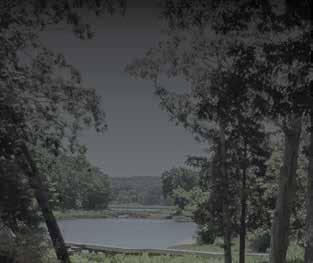



































































“Reinforced PVC interior finish is truly the best option for our new Plunge Plus pool but is also ideal for renovating pools.”







































































































in plumbing lines, jets, and return lines. Other contributing factors include:
w Decreased filtration
w Improper water chemistry
w Scaling and biofilm buildup
w Bacteria that binds to sediment
w Lack of disinfection
w High pH, which reduces chlorine effectiveness
w High cyanuric acid levels, which limit chlorine performance
Case Study: Legionella Outbreak in Indian River County, FL
In 2016, I worked on an outbreak involving two people infected with Legionella pneumophila in a 55+ community in Indian River County, Florida. Both developed pneumonia or related symptoms and sought care at hospitals or doctors’ offices.
A simple urine antigen test, inexpensive compared to other lab tests, confirmed the presence of Legionella. Once positive, results were reported to the local health department, as required under Florida’s Reportable Diseases/ Conditions List.
What Does the Health Dept. Do With the Results?
The health department assigns a nurse or environmental health professional to contact the ill person and conduct a lengthy interview. In this case, both individuals reported using the same public spa within the same week.
The public spa was assigned to an environmental health pool inspector. Inspection revealed:
w No disinfectant level
w High pH level
w A malfunctioning ORP controller
w No daily log of chlorine and pH levels
The spa was immediately closed. Once violations were corrected, it was reinspected and allowed to reopen. A formal notice of violation warned the property owner that future noncompliance could result in fines or further action.
The spa was serviced by a licensed pool service contractor. Negligence was suspected for failure to maintain proper disinfectant levels, pH, ORP functionality, and chemical logs.
The family of one of the ill individuals sued both the property owner and pool service company. Public records requests to the Florida Department of Health revealed inspection records, but not protected medical records. Ultimately, both the property owner and the pool service company were found negligent and paid damages.
What Can Pool Pros Do to Control Legionella?
w Follow all manufacturer recommendations and local health agency requirements
w Monitor disinfectant and pH levels daily (or more often) and log results
w Review logs for trends to identify needed maintenance
w Maintain disinfectant levels: Chlorine 3–10 ppm; Bromine 4–8 ppm
w Keep pH between 7.2–7.8
w Use ORP and automatic feed systems
w Keep cyanuric acid below 40 ppm
w Maintain proper water balance to prevent scale
w Run therapy jets daily for 15–30 minutes
w Routinely backwash sand and DE filters; replace cartridges regularly
w Ensure 24-hour water circulation through filters
w Enforce bather load limits and post spa rules
w Post warnings for immunecompromised and chronically ill individuals
w Close spas daily for superchlorination (10 ppm or 10x combined chlorine)
w Drain, scrub, and disinfect spa walls, tile, and holding tanks with fresh 1:10 sodium hypochlorite solution
w Replace spa water regularly (Spa Volume ÷ 3 ÷ Average Users per Day)
w Ensure indoor spas have isolated air handlers and dehumidifiers
Prevention of Legionellosis should be a top priority for pool pros due to the significant health, legal, and financial risks involved.
Many public health codes do not define spas as “increased risk aquatic venues.” The CDC’s 2023 Model Aquatic Health Code defines these as venues serving very young children or therapy patients.
However, since Legionella poses serious risks in spas, they should be classified as high-risk venues. This would prompt requirements for secondary disinfection, such as ultraviolet (UV) systems.
UV disinfection has been shown to inactivate Legionella at a 4-log rate (4 mJ/cm²). A dual approach— UV combined with chlorine—can provide an effective barrier, similar to systems already required for splash pads. Implementing UV systems in spas could significantly reduce outbreaks and protect vulnerable users.

Read the entire article.
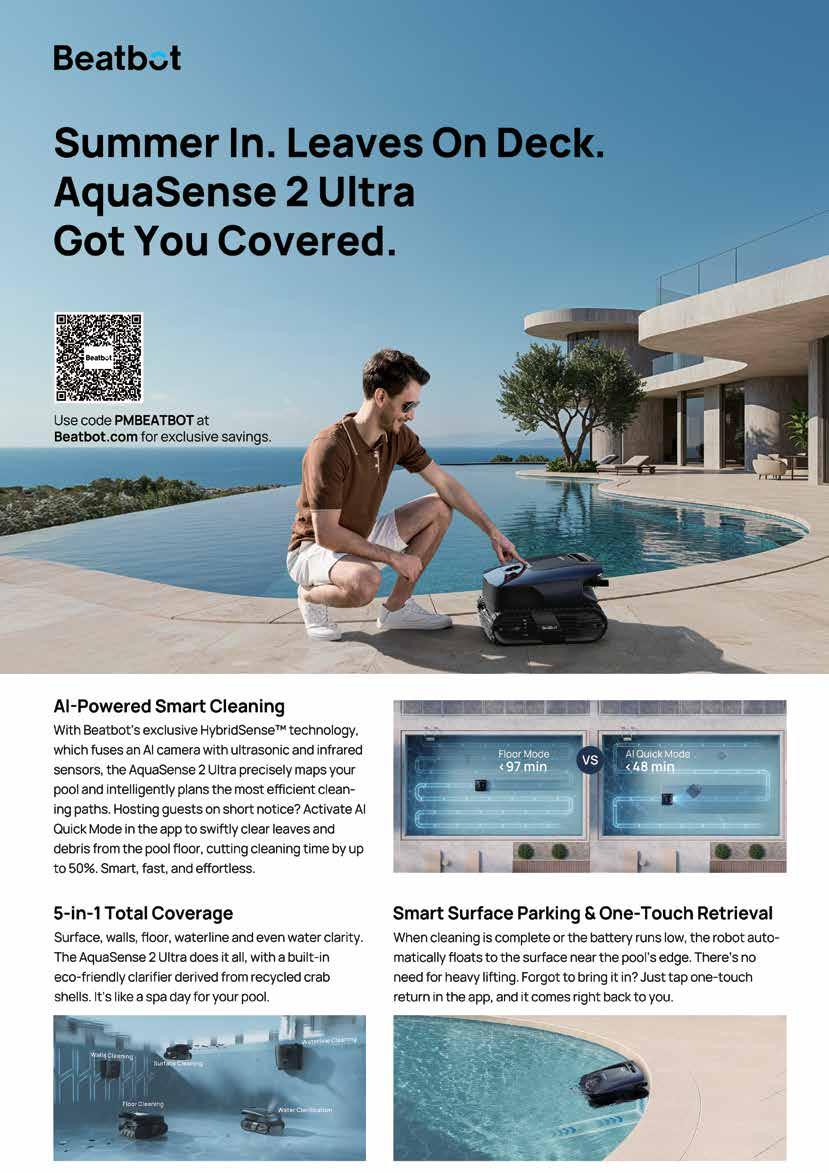
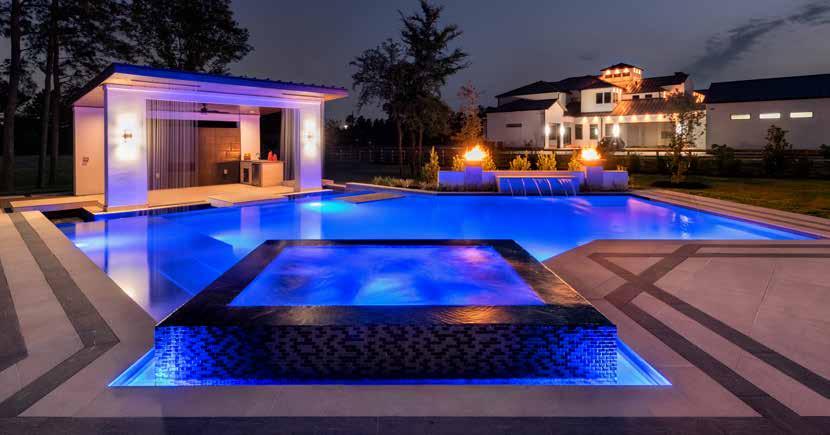
BY JOE TRUSTY | PHOTO CREDITS: JIMI SMITH PHOTOGRAPHY
When it comes to high-end pool construction, Texas is one of the most competitive markets in the country. Standing out requires not only exceptional craftsmanship but also a leadership style that inspires both clients and teams. Few embody this better than Josh Buzzell, Chairman of the Board with Master Pools Guild and coowner of Regal Pools with partner Edwin Escobar.
Buzzell’s rise in the industry is a story of determination, vision, and culture-driven leadership. In a recent conversation with Pool Magazine, he reflected on what it took to build Regal Pools into one of the most respected names in pool design and construction, while spotlighting a few of the projects and team dynamics that define the company’s reputation in
the Houston market today.
Buzzell never imagined himself as a pool builder when he first entered the industry. “I was in limbo. I was still in college, but I hated school and got a job making $400 a week cleaning swimming pools here in Houston,” he recalled. That early job exposed him to high-end pool construction—and the spark was lit. “I saw all these really cool formations and things they were able to build… the more I fell in love with it. I thought, this is something I could lean into.”
Instead of chasing fast profits, Buzzell focused on mastering every aspect of the business. “Everybody says you need to work on the business. Well, no. We learned everything about this business from the inside out. We built the entire thing,” he explained.
Crucially, the vision was never a solo act. “I realized early on that we had to build a strong team—it couldn’t just be me,” Buzzell said. “That’s when I met Edwin, working at the same company, and he was a mechanical genius.” The partnership clicked: Josh focused on the strategy, sales, and systems, while Escobar drove operations in the field and managed relationships with subcontractors. “There’s a vibe there,” Buzzell added. “Edwin holds the standard out there and expects greatness.” That dual-engine approach—office and field in lockstep—would become Regal’s competitive edge.
Thriving in a HyperCompetitive Market
Houston is crowded with pool builders, yet Regal Pools continues to dominate at the upper end of the market.
Buzzell credits that to a relentless focus on quality, culture, and customer experience.
“Our quality and our people—what we deliver is a lot different than everybody else,” he said. “We want to do things that not just anyone else can do. I personally think we should be a top 10 builder… our quality I would put up against anybody in the industry.”
Standards start the moment you walk into the office. “Even when you come to my office, the first thing it says is ‘Set The Standard’. Everybody sees it. That’s what our clients expect,” he noted. With half-million-dollar builds, “clients are going to be on your back about perfection,” so Regal trains for it: project managers are coached to navigate communication styles, expectations, and on-site decision-making at a very high level.
The Regal Pools name has become synonymous with projects that push boundaries, where art, engineering, and vision collide. Buzzell lights up when talking about the work that sets his team apart.
One of the company’s proudest achievements is a multi-million-dollar lazy river built for a professional basketball player. “The lazy river’s awesome—super challenging,” Buzzell explained. “We had to take out 250 dump trucks worth of dirt and then bring 50 dump trucks back of fill. We literally had full-size road rollers inside of it compacting dirt. It looked like Armageddon out there, but my designers nailed it, the homeowner was so happy, and my project manager kicked butt.”
Another showpiece is a million-dollar pool engineered to integrate with a luxury residence. “This thing has a million-dollar drainage system. Tons of piers and beams that are engineered with the home, so you get that California vibe where the pool actually runs underneath part of the house,” said Buzzell. The result is a backyard centerpiece that is as much about structural brilliance as it is beauty.
An Investment in Art
Innovation also comes through in the details Regal obsesses over. One client paid extra for a hidden spa designed to disappear seamlessly

into the poolscape. “He asked me, ‘Does this get you excited?’ and I said, ‘Yeah, this gets me excited.’ We engineered hydraulics so the water flows like a sheet of glass across granite. It’s like a piece of art, not just a pool,” Buzzell said.
That artistic spirit runs through many Regal projects, and nowhere is that more evident than in Tomball, Texas, where the company is headquartered. As the Houston metro has boomed, Regal has captured a growing share of the luxury market in its own backyard, designing pools that are as much architectural statements as they are places to swim. Negative edges that double as bridges, rain curtains, and entertainment zones woven into the water have become part of the firm’s signature.
Buzzell often explains the value of these investments in simple terms. “I always tell people, you can buy a Ferrari, but only two people can fit in it. You can buy a pool and everybody can use it, and you can look at it all the time,” he reflected.
Buzzell says that he measures success beyond lists and awards. “Again, we already should be a top 10 builder… but I don’t judge myself on what gets printed in a magazine. I make this statement based on our culture, our reputation, our discipline, and our execution. Being consistently consistent is not easy.”
With projects that push design boundaries, a culture that attracts top talent, and a two-engine leadership model— Buzzell’s vision and Escobar’s construction know-how— Regal Pools isn’t just thriving in Texas; they’re shaping what luxury pool building looks like for years to come.

Read the entire article.

BY JOE TRUSTY
During the financial crisis of 2008, economic conditions threatened to strain River Pools. At the time, Marcus Sheridan made a decision that not only saved his business but also reshaped how an entire industry thinks about marketing. Today, Sheridan is recognized as one of the foremost voices in digital sales and marketing strategy, a sought-after keynote speaker, and the author of They Ask, You Answer—a book that has become required reading for business owners looking to thrive in the digital age.
Sheridan co-founded River Pools in 2001 with two partners, starting with modest ambitions and a broad focus that included above-ground pools, hot tubs, and a retail store. Things were steady, but when the recession hit, the future of the company looked bleak.
“It looked like we needed to file bankruptcy,” he recalled. “It was
during this time though, that I really started to just learn more about the way the digital buyer was evolving.”
Instead of retreating, Sheridan dove into inbound marketing and quickly realized the path forward was through answering every single question potential buyers had ever asked.
“We said, ‘We’re gonna become like the Wikipedia of fiberglass pools. If anybody has a question, good, bad, or ugly, we’re gonna address it. We’re gonna own it with text and with video. We’re just gonna go full send on this.’”
That approach transformed River Pools into the most visited swimming pool website in the world. One of the most impactful moments came when he addressed the question most pool companies avoided: pricing.
“This is literally the first question everybody wants to know,” he said. “We were the first pool company in the world to address how much an in-ground pool costs on our website.”
That one article, written in 45 minutes at his kitchen table, has generated over $35 million in revenue.
Even with proof in hand, many contractors still avoid talking about pricing. Sheridan says it comes down to three myths: every job is different, competitors will use it against them, and customers will be scared off by the cost.
“Just doing that [explaining cost variables] induces a ton of trust,” he said. “And if your competitors don’t already know your pricing, they’re asleep at the wheel.” But perhaps the most critical insight is this: “What we know scares people
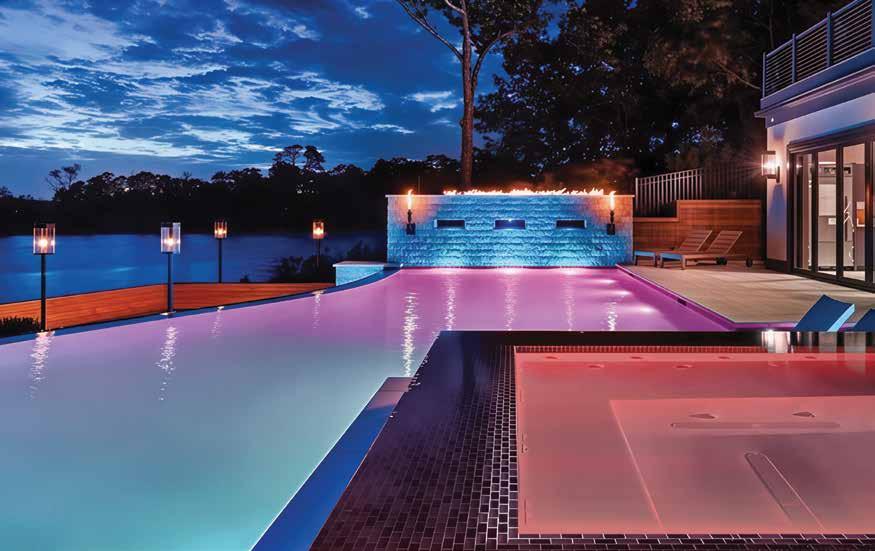
High-performance:
Intuitive
Plug-and-play
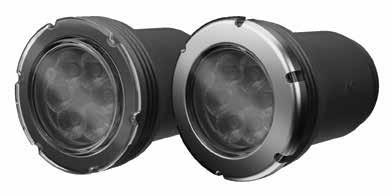






away is when they can’t find any information on pricing.”
Today’s buyer doesn’t want to speak to a salesperson until they’re ready. Sheridan calls them the “self-service buyer,” and he built PriceGuide.ai to address their expectations.
He shared a case study from AE Pools & Landscape, which added a pricing estimator to its website in early 2024. “Last year they got 400 leads for the entire year. This year, they’ve gotten 1,200 leads so far. They closed 300 sales and have $5 million in the pipeline.”
That $200 tool, he said, took the company from $3 million to a projected $10 million in one year.
Sheridan believes AI will soon be a standard part of how consumers shop for contractors. “Homeowners are going to tell their AI assistant, ‘We want a swimming pool. Research the local companies, give us estimates, and tell us who you’d choose and why.’”
And the contractors who don’t have price estimators? “You don’t get the recommendation.”
He’s confident in his prediction: “Within five years, 90% of all swimming pool companies will have a pricing estimator on their website. Mark my words.”
Asked about the most common marketing mistake contractors make, Sheridan didn’t hesitate: “Video, lack of. It’s not close.”
He believes YouTube may soon be more important than a company website. One-to-one video, project documentation, and consistent short-form content all help create trust.
“The first time the homeowner sees the salesperson’s face shouldn’t be when they walk up the driveway. Shame on you if that’s the case.”
He emphasized the need to document every job. “We’re one of the most visual products in the world. If you’re not taking video of every job—before and afters, showing the process—you’re
missing the boat.”
“Everything your buyer wants— those are the same things you want. You wanna watch video when you’re researching? Meet the consumer where they are. It doesn’t matter if you think you have a face for video or not. You’re still gonna ask them for money, so you better hope they trust you.”
Sheridan doesn’t shy away from comparison content, even if it means steering a prospect toward a different product or competitor.
“If somebody asks, ‘Are there other pool builders you’d recommend?’— am I gonna ignore it? No, because they’re not ignoring it.”
River Pools even built a quiz tool that sometimes recommends vinyl or concrete—though they only sell fiberglass. “Why would we do that? Because that’s what buyers want. And I generate way more leads because of it.”






BY MARCUS PACKER | PHOTOS: ERIC TATE, PEAK VISUALS
Aclient approached Rockwater Farm Landscapes & Hardscapes with a unique request: design a luxury backyard pool and spa that incorporated an autocover system. For many designers, that detail might have been a limitation, but for Todd Thomasson, owner of Rockwater Farm, it became the spark for something original. Rather than compromise the spa design, he treated the challenge as an opportunity to elevate the overall aesthetic. The result is a one-of-a-kind “Pac-Man” style spa that delivers both functionality and a striking focal point for the backyard.
For Thomasson, every project begins with the belief that no two backyards should ever look
the same. “We simply don’t build the same thing twice,” he explained. “Even if it’s another 20 by 40 pool, the backyard, the access, the elevations—all of it is different. Every time is the first time for us, and that’s what makes design exciting.”
This philosophy extends beyond pools. Founded nearly two decades ago, Rockwater Farm began as a landscaping company rooted in Thomasson’s background as a trained stonemason. Over the years, the company evolved to specialize in complete outdoor environments—pools, pavilions, fireplaces, outdoor kitchens, and landscape integration.
That holistic approach ensures projects flow seamlessly, with one point of accountability and a vision that unifies all elements of the backyard.
Like many of Rockwater Farm’s most memorable projects, this one began with a relationship. The homeowners had been long-time maintenance clients, trusting the company with their property care for years. When they purchased a new home in a growing neighborhood, they wanted more than just a functional backyard — they envisioned a place to entertain, gather, and enjoy with family
The project unfolded in phases. First came a patio, outdoor kitchen, and pergola connected to the house — all designed and built by Thomasson’s team. But those elements were only part of a bigger dream. From the start, the homeowners knew a pool and spa would eventually complete the space. The question wasn’t if, but how.
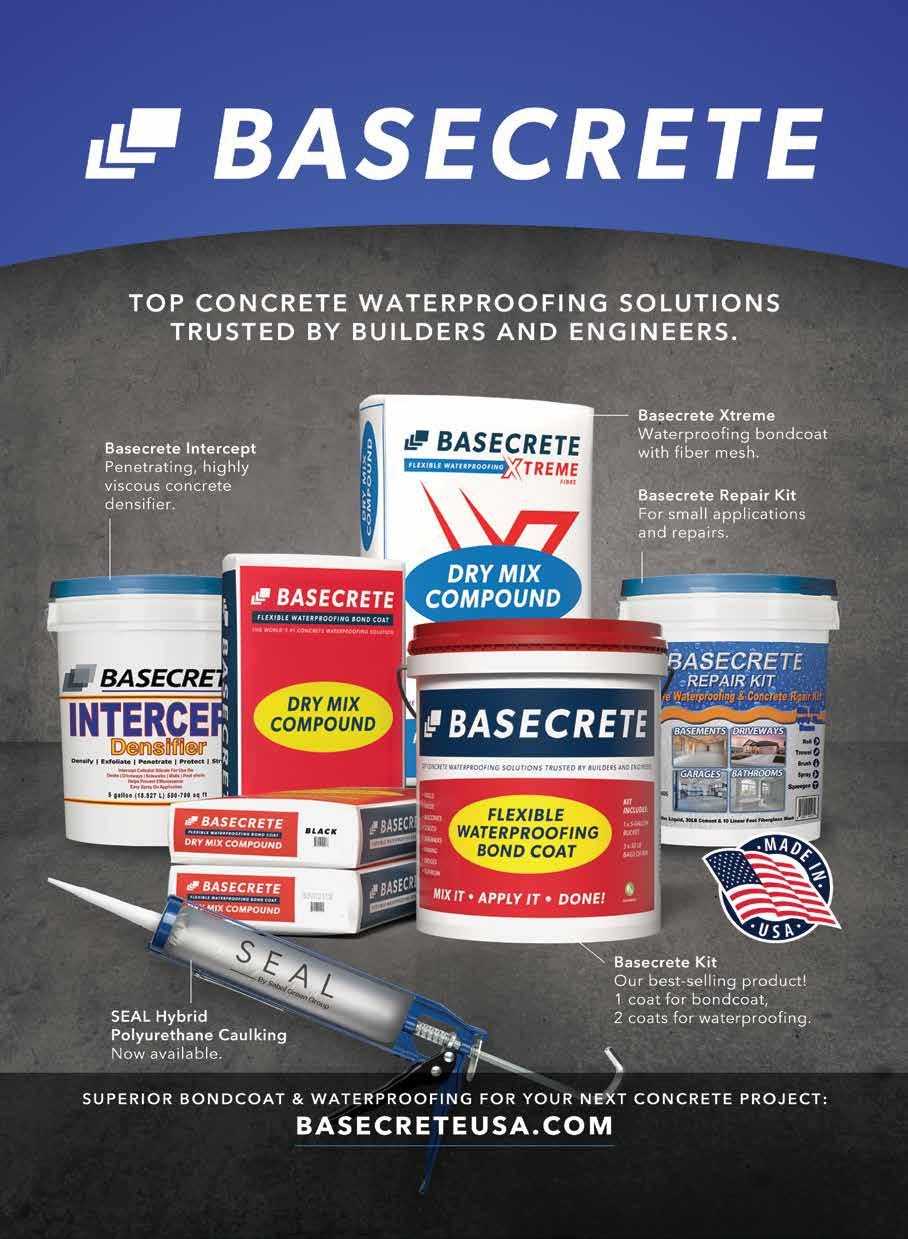
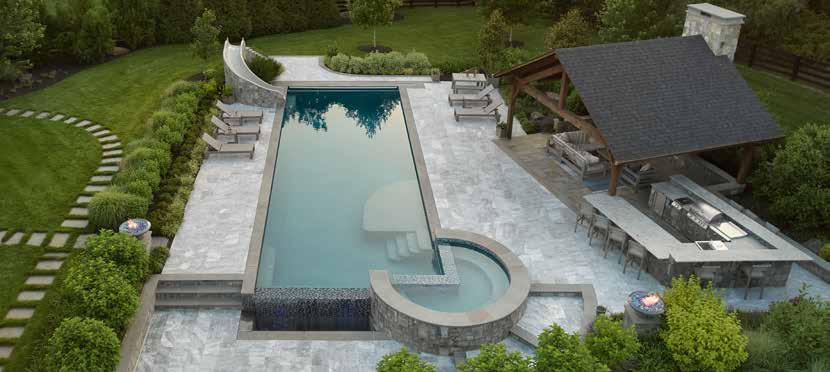
When it came time to plan the pool and reconcile the client’s desire for an autocover, Thomasson faced a design puzzle. The cover system required uninterrupted space at one end of the pool, which conflicted with traditional spa placement. Rather than forcing a compromise, he cut a quarter out of the spa and turned it into a design opportunity.
“I didn’t want the typical spa on the side of the pool that spills in. Those are dime a dozen,” said Thomasson. “We’re always asking: what haven’t we done, or what can we pull from different projects to create something unique? This became what we call a crow’s nest of a spa, perched up on the corner of the pool. Because of the shape, it ended up looking like Pac-Man”.
The cut-out serves multiple purposes. It creates a clean line for the autocover to function, ensures no one has their back to the pool—a safety consideration—and frames the water in a striking way. “By taking out that piece, we kept visibility of the water as a priority. Everyone in the spa is still looking
across the pool, not away from it,” he explained.
The pool’s elegance extends beyond its shape. Every material was selected with care. Around the pool, Thomasson used marble decking with a sandblasted finish, chosen for its comfort and practicality. “It doesn’t get hot underfoot like flagstone, pavers, or even concrete. At the same time, it provides grip, so it’s safe as well as beautiful.”
The pavilion, angled to enhance views from the house, introduces a rustic counterpoint with Pennsylvania flagstone underfoot and heavy timber framing overhead. “Everything on this project is natural stone. We don’t really do pavers. I’m biased as a former stonemason, but I believe it’s a better product. It holds up, and it looks timeless,” Thomasson said.
The interior finish of the pool is a darker blue plaster, selected for both aesthetic and practical reasons. It reflects light beautifully
and helps maintain water temperature, creating shimmering, reflective tones that change with the sky.
What could have been a design obstacle—the integration of an autocover—became the genesis of one of Rockwater Farm’s most memorable projects. By embracing the challenge, Thomasson and his team produced something that is not only functional but also a signature piece of design. The “PacMan” spa represents more than a clever workaround; it reflects a philosophy of turning limitations into opportunities.
In Thomasson’s words, “Ultimately, you want something different in your portfolio. That’s how we approach design. It’s about pushing creativity while still serving the client’s needs”.
For Rockwater Farm, thinking around covers and corners has become second nature—and it shows in every detail of this unique backyard retreat.




Highest approval rates
Underwriting as fast as 24 hours
Decisions as fast as 2 days
Loans for scores as low as 620
Options for no income verification
25 years of transparency and trust

The pool, spa, and hot tub industry is on the cusp of a cultural shift. Representation for women has often lagged, but that is beginning to change with the launch of Women of Water (WOW), a new initiative by the Pool & Hot Tub Alliance (PHTA) in partnership with POOLCORP.
Designed to support women at all phases in their careers, WOW is about connection, mentorship, leadership development, and advocacy. The initiative makes its official debut this October at the International Pool Spa Patio Expo, with plans to extend its reach through events, webinars, and chapter toolkits.
A sked what sparked the creation of Women of Water and why now
was the right moment, Sabeena Hickman, President & CEO of PHTA, traced the idea back several years.
“Initially, when I came on board, we saw so much success with the Wave program and we had a board conversation about launching an initiative for women,” Hickman explained. “The goal was to launch it in 2020. We got a little sidetracked due to COVID and put it on hold until recently, when Donna Williams of POOLCORP became our chair and POOLCORP came on as a strategic partner. The timing was perfect to launch this initiative.”
Hickman said the demand has been consistent. “Whenever I travel and we have booths or attend other board meetings, so
BY MARIANNE TRUSTY PHOTOS: PHTA / POOLCORP
many women say, ‘Can you start a women’s group, a networking group?’ So it’s something that our members have really longed for. There are so many amazing groups out there that Women of Water will complement. We’re going to work in partnership as PHTA always does, but it was just an increasing demand from members.”
When asked whether the primary goals of WOW were networking, leadership development, or mentorship, Hickman made it clear that the initiative was designed to cover all of those areas. “I think it’s all of the above,” she said. “We saw a tremendous opportunity to elevate and support women who are already making incredible contributions to the industry.”


Hickman said a number of leaders have already stepped up to shape the initiative. “Kendall Large, Jamie Novak, and Donna Williams have been involved in the initial conversations for sure,” she said. “We’ve also had interest from leaders like Alicia Stephens at BioLab and Alexa Dalpino out of California, who is on the Builders Council. We haven’t gotten to a point where we’re fully organized— we’re going to wait until Expo to put together a steering committee that will help drive the program.”
Asked how POOLCORP became a partner in the effort, Kendall Large, Vice President of Marketing at POOLCORP, described it as a natural fit.
“We’re celebrating 45 years in business and our 30th year as a public company,” Large said. “One of the big initiatives this year has been industry stewardship. When we looked across the industry, it was clear the Pool & Hot Tub Alliance was the right partner. Earlier this year, Jamie and I met with Sabeena and her team and said, ‘As the largest distributor and you as PHTA, we really share a commitment to grow the industry.’ We formed a strategic partnership, and the thing that excites me most is how aligned we are on progressing the industry—whether it’s education, developing talent, launching Women of Water, bringing new products to market, elevating training, or driving innovation. This just felt like the right place for us to partner.”
Large connected WOW to some of the other programs POOLCORP has already established internally. “We have our MIT program that brings in a hundred new professionals annually, of which 15% are women,”
she said. “In the past five years, we’ve also formed what’s called the WIN program— Women’s Interactive Network. It’s focused on creating a community for collaboration, mentorship, and professional development.
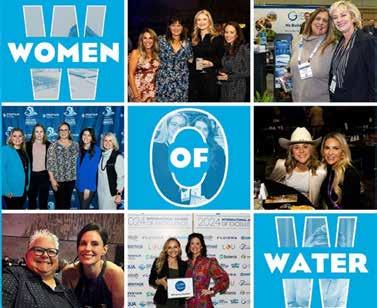
The natural progression was not just thinking about POOLCORP, but asking how we expand beyond. How do we support this fantastic niche industry and create meaningful programs that help professionals from entry level to executive across all groups—pool professionals, business owners, distributors, manufacturers? We’re all in this together, and I’m really excited to see where this goes.”
When asked what success for WOW would look like a few years from now, Jamie Novak, Director of Marketing for POOLCORP, said it’s all about lasting collaboration.
“For me, success looks like women from across the industry collaborating,” Novak said. “Women’s groups collaborating across the industry is powerful because it really helps to create that network of shared knowledge, mentorship, and advocacy. I see success as a thriving network of women who come together and feel empowered to go after what they want.”
Novak added advice she has shared at other women’s events. “One of the things that I’ve talked about is this concept of a personal advisory board. Find the people in the industry and outside of the industry that should be part of it and really connect with them. You want
people who are going to challenge you and have that right balance of being supportive while also pushing you to grow and come out of your shell.”
The official WOW launch takes place at the PSP Deck Expo in Las Vegas this October. The highlight will be a keynote session by leadership expert Heather Whelpley, author of An Overachiever’s Guide to Breaking the Rules.
Asked how WOW would continue beyond the Expo, Hickman outlined the plan. “Once we put together a steering committee, there will be even more ideas and programs to deliver to the industry.”
Large added: “We are never a set-itand-forget-it. We have a roadmap to create a full-scale program that leverages some of the things we’ve done within our own network at POOLCORP and then work with PHTA to bring that beyond POOLCORP—to the hundreds of thousands of customers we serve and the manufacturer partners we work with.

Read the entire article.

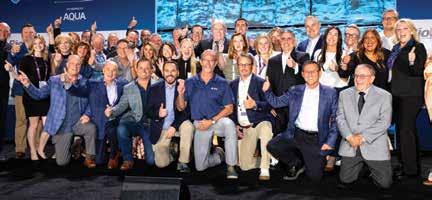






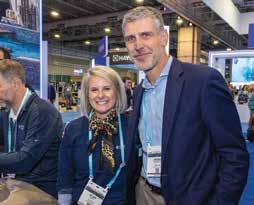














BY SUSIE CUEBAS
Few organizations have a clearer view of the luxury pool industry than the Master Pools Guild (MPG). With currently over 105 elite pool builders and construction experts around the globe, the Guild has a finger on the pulse of what’s driving both growth and concern in today’s market. Executive Director Teri Wiltshire is on the frontlines of these conversations, regularly checking in with members, conducting surveys, and hosting mastermind sessions to help the industry adapt.
One of the most pressing topics in recent years has been the rising cost of building a pool. Wiltshire explained, “It’s a combination of rising material costs, skilled labor shortages, increased demand during the pandemic that no one could keep up with. Now, inflation and even things like freight and permitting delays all seem to be adding layers of cost to every project.”
For builders, these challenges demand careful financial management and strong communication. As Wiltshire noted, “Budgeting early, locking in pricing with suppliers when this is possible, improving their project planning, making sure that their contracts are up to date, and being transparent with clients upfront—all of those go a long way into creating a successful project outcome.”
The strain is felt differently depending on the region. In coastal states, shipping delays and port congestion push prices higher. In landlocked areas, material transport costs can balloon quickly. And in fastgrowing states like Texas and Florida, shortages of skilled subcontractors have added both time and expense to projects. The complexity of the problem is part of why Wiltshire and MPG members are doubling down on sharing best practices across borders.
While costs rise, homeowners are also seeking peace of mind with such a major investment. Wiltshire emphasized the importance of doing homework: “Review your state’s licensing requirements and make sure the builders you’re speaking to meet all of those. Check their references, warranties, do a deep dive into the warranties they’re offering. Does the company have a physical place of business? Are they PHTA members?”
Continuing education, she said, is another factor that benefits everyone: “Keeping their skillset up to date is going to translate into better service for the consumer.” And of course, she added, “If you ask me, I’m always gonna say that they could check and see if they’re a member of the Master Pools Guild.”


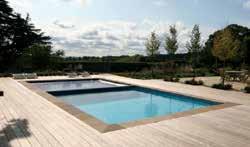

Since 1980, Aquamatic pool covers have focused on safety, energy savings and ease of use. With our technology, we are setting a higher standard through innovation and design. Supported by a 20 year mechanical warranty, and the most standard features of any automatic cover in the industry.
Hydramatic
•all-fluid hydraulic drive
•one-fourth the moving parts
•zero lubrication & self-adjusting
HydraLux
•unique trackless design can cover virtually any pool
•the only energy saving insulated automatic cover
•manufactured exclusively in the USA
At present, MPG boasts 105 members worldwide, all vetted luxury pool builders. Their website allows homeowners to search by zip code and connect directly with builders in their area.
What once might have been seen purely as a lifestyle upgrade has become a tangible financial asset. Wiltshire confirmed what many real estate analysts have reported: “What we’ve seen is that homeowners can recover up to 50% or more of their initial investment depending on the market. But in luxury markets, it’s not uncommon to see a pool make the difference in closing the sale. Realtor, HomeAdvisor, and BankRate all report that adding an inground pool can raise a home’s value by about 7%, even higher in warm climate areas. In California, for example, pools have added up to 10% to a home’s value.”
Several factors determine the return, from design and location to build quality and the surrounding amenities. Wiltshire pointed out, “The quality of the construction and adjacent elements like landscaping and outdoor kitchens—I believe all of those add to the desirability.”
The pandemic reinforced the idea of home as sanctuary, and that shift remains strong. Wiltshire tied it directly to consumer behavior: “Let’s not forget the health and wellbeing focus post-COVID—a healthy, active lifestyle in an environment that you can control. Who wouldn’t want to be able to provide that for their family?”
That dual appeal—financial ROI and
lifestyle enhancement—continues to drive demand even as costs rise. Pools are increasingly part of a bigger picture: an outdoor living environment where families gather, host, and invest in their wellbeing.
If building pools has grown more complex, selling them has become equally so. Consumers are better informed, more research-driven, and more selective than ever before. Wiltshire put it bluntly: “Consumer behavior’s changed. People start online and if they can’t find you, or worse, if what they find isn’t great, you’re immediately out of the running.”
During the pandemic, however, things looked very different. Pools practically sold themselves. Builders joked that you could close a deal on the back of a cocktail napkin—and for a while, that wasn’t far from reality. Phones rang off the hook, waiting lists stretched months or years, and many admitted they were busier than they had ever been. Some proudly pointed to record-setting sales, but few wanted to acknowledge how quickly the momentum shifted once the pandemic bubble burst.
Wiltshire didn’t mince words about the fallout. “A lot of builders took their foot off the gas during COVID because they were all booked out, and now leads have kind of dried up and they’re scrambling to be seen again.”
What was once an environment of effortless sales has shifted into a far more competitive environment. As she explained, “Leads were flowing in organically for a good long while, but that’s changed. It’s tapered off and builders need to reinvest in SEO, local listings, reviews—all the
fundamentals.”
Wiltshire recommends starting simple: “If they start with their website, they’re active on social, they showcase their work using video and every avenue available, that is a great place to start. And then ultimately, you want to ask your happy customers for their reviews.”
The impact of a testimonial— especially a video one—cannot be overstated. “Trust matters. When someone is about to spend six figures on a pool, they’re not just going to pick a name out of a hat. They want to read reviews.”
So how can builders generate more of those powerful endorsements? Wiltshire offered concrete advice: “Start with your Google Business Profile. Make sure that you are well represented on Houzz and Facebook, Yelp, and anywhere you can post an image of your work.”
Wiltshire says for members of the Master Pools Guild and the rest of the industry at large, the challenges of 2025 are real but manageable. Rising costs, tighter margins, and shifting consumer expectations demand adaptation, but they also offer opportunities for the builders willing to evolve. Transparency in pricing, commitment to education, and proactive marketing are the keys to thriving in this environment.
“In times like these, the mission is clear,” Wiltshire said. “Deliver more than clients expect—and do it with the integrity and craftsmanship that define the best in our industry.”

Read the entire article.










BY SUSIE CUEBAS
If you’ve lounged poolside at the Wynn, Bellagio, Mandalay Bay, or Four Seasons, chances are you’ve already walked on Deckology’s work. The company’s AquaFlex surfacing system has become the standard for luxury properties that demand safety, comfort, and durability without sacrificing style.
For Sean West, founder and now VP of Sales at Deckology, the story begins in Las Vegas—arguably one of the toughest proving grounds for any pool surface.
Las Vegas is a city that pushes materials to their limits. Decks are subjected to relentless desert heat, punishing UV rays, harsh chemical exposure, and heavy foot traffic from thousands of daily visitors. It’s a place where traditional concrete and tile crack, fade, or become dangerously slick almost overnight.
Sean West saw the problem firsthand when he launched his company in 2006 under the name Pebble Stone Coatings. “We were looking for innovative alternatives to traditional resurfacing that just weren’t holding up in the intense resort environment,” West recalls.
That search led to the development of AquaFlex, a thermoplastic surfacing system designed to stand up to the conditions Las Vegas dishes out. “It’s soft underfoot, slip resistant, and incredibly durable,” West explains. “We’re not just selling a product—we’re solving a longstanding problem.”
Unlike glued-down systems that eventually peel, AquaFlex chemically bonds on-site. Once poured and cured, the surface fuses together into a seamless layer within 24 hours. “It creates a brand-new surface that doesn’t fail under pressure,” West says. Resorts noticed quickly, and Deckology soon found itself
working with some of the most prestigious names in hospitality. One of AquaFlex’s most celebrated advantages is its ability to stay cool under extreme heat. Anyone who has tried to cross a sunbaked concrete deck in July knows the pain—literally. “Bare feet on traditional concrete can be unbearable, not to mention dangerous for kids and older guests,” West says.
The company’s tests and field experience show that AquaFlex stays up to 23% cooler than concrete. “Reducing surface temperatures by over 20% prevents burns and accidents. It really makes a difference in guest satisfaction and safety scores,” he adds.
That comfort translates directly into better guest reviews. Families don’t complain about scorched feet, older visitors feel safer, and operators see improved safety ratings. For a luxury resort, those details matter.
Speed of installation adds another advantage. “AquaFlex requires very little demolition,” West says. “In most cases, it’s ready for light foot traffic within 24 hours. That speed matters—hotels can’t afford long downtimes.” For a property with thousands of daily guests, every closed day represents lost revenue, so fast turnaround is more than convenience—it’s business critical.
Resorts today expect more from every component of their property. Sustainability, design flexibility, and long-term performance are all part of the checklist.
“Hotels want surfaces that last longer, require less maintenance, and meet strict slip-resistance standards,” West explains. “At the same time, designers want flexibility to customize a property’s
look. AquaFlex delivers both without compromise.”
Another factor that has propelled Deckology forward is its U.S.-based manufacturing. While much of the industry struggled with tariffs and supply chain disruptions in recent years, Deckology stayed the course.
“Because we’re not dependent on foreign suppliers, tariffs haven’t affected our pricing,” West says. “While competitors faced 15–30% increases and major delays, we’ve stayed stable. Clients planning multimillion-dollar projects appreciate that consistency.”
For hospitality operators, stability in both pricing and delivery is essential. When properties plan capital improvements years in advance, uncertainty in material
costs or lead times can derail projects. Deckology’s ability to provide predictable outcomes has given it a distinct edge over competitors.
The company also maintains tight control over installation by using its own teams rather than relying solely on outside contractors. “Deckology delivers pool decks that are cooler, safer, longer lasting, and customizable,” West explains. “And they’re installed by our own crews, with dedication to customer satisfaction before, during, and after the installation.”
West sums it up simply: “We’re not just selling a product—we’re solving problems. And when you solve problems for resorts, you build relationships that last.”

Read the entire article.





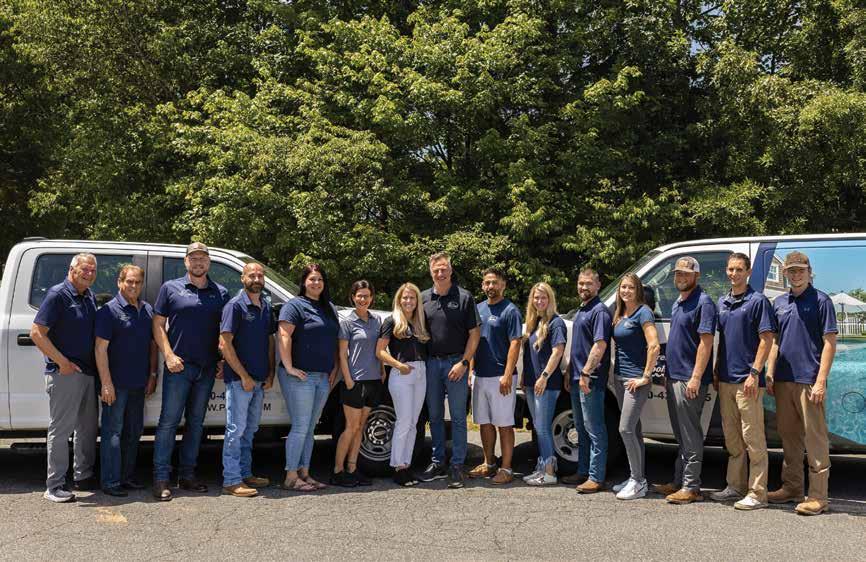



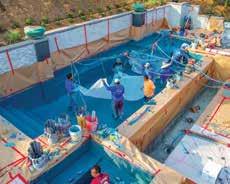

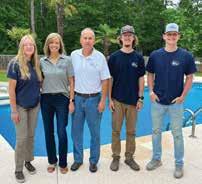







Award winning designer Bo Barnett explains why the trend of large panel porcelain has become white hot right now.
BY JOE TRUSTY
PHOTOS: ETHAN COOPER PHOTOGRAPHY
In Austin, Texas, a city known for its competitive pool and outdoor living market, Bo Barnett has carved out a reputation for pushing boundaries. As the founder of GBIV Designs, Barnett combines artistry with engineering precision, blending design sensibility with technical know-how.
His introduction to the pool industry came somewhat unexpectedly. “I actually started in the pool business about 24 years ago,” Barnett said. “At the time, I didn’t know much about swimming pools, but I had always been into design and drawing. I got my first job at a big box company that paid me to sell pools, and that’s where I fell in love with the industry.”
After moving to Austin, Barnett cofounded a pool company in 2007. Within a decade, his firm KB Custom Pools ranked among the Top 50 Builders in the U.S. and collected multiple industry awards. But Barnett wasn’t satisfied with simply excelling in the residential market. He wanted to become a design firm that architects and builders could collaborate with on a national scale.
“As a builder with ‘custom pools’ in the company name, it was hard to get architects and design firms to see me as a peer,” he explained.
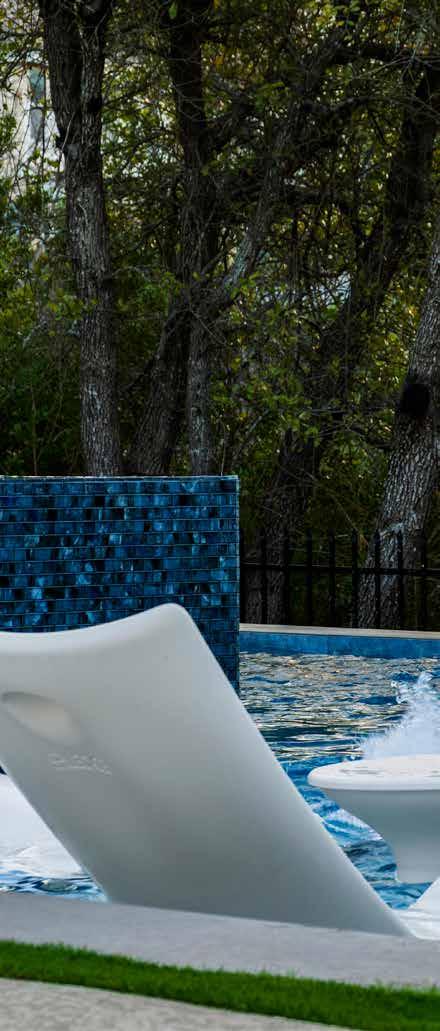

For a sleek, modern look that mimics natural stone, wood, or other organic materials, large panel porcelain has become a go-to for designers like Barnett.

“That’s when I decided to pivot. With GBIV, we could offer everything from conceptual design to structural and hydraulic engineering—not just builds in central Texas, but resources for projects all over the country.”
This broader vision opened the door to exploring innovative materials, and it was around this point in time that Barnett began championing the use of largeformat porcelain tile panels.
At the Coverings trade show in Orlando earlier this year, Barnett’s panel on porcelain drew a crowd of builders eager to hear his perspective. It’s easy to understand why: porcelain is challenging to master, but its potential is enormous.
Barnett’s interest was sparked by limitations he saw in conventional
materials. “I got really bored with the one-by-one or one-by-two tiles,” he admitted. “I’d visit these amazing homes, see porcelain panels in the bathrooms, and think—why can’t we use this outside?”
Manufacturers were skeptical, arguing that porcelain wasn’t durable enough outdoors. But Barnett’s curiosity led him overseas. “In Italy, they showed me thin veneer porcelain that looked just like marble but was almost impenetrable to water, resistant to thermal expansion, and built to last,” he said. “That’s when I knew it had potential.”
He tested it on two projects. The results were visually stunning—but the process was riddled with errors. Without the right tools or methods, Barnett and his team faced broken panels, failed adhesion, and financial setbacks. Still, he saw enough promise to keep going.
Barnett doesn’t shy away from recounting those struggles. “The first project was a financial disaster,” he said bluntly. “We broke panels just carrying them into the backyard. We used the wrong blades, the wrong adhesion methods. Out of 11 panels, seven broke. But the end result still looked incredible.”
Instead of giving up, Barnett treated those failures as tuition in a new discipline. He invested in the proper equipment: cutting tables, racks, suction cups, and scoring systems. “It cost us about $6,000 to outfit ourselves to handle the panels correctly,” he recalled. “But once we did, everything changed. Now, breaking a panel is rare. If one breaks, it’s because someone did something wrong.”
The same lesson applied to adhesives. Cementitious methods
Alexandria, VA
Albuquerque, NM
Honolulu, HI
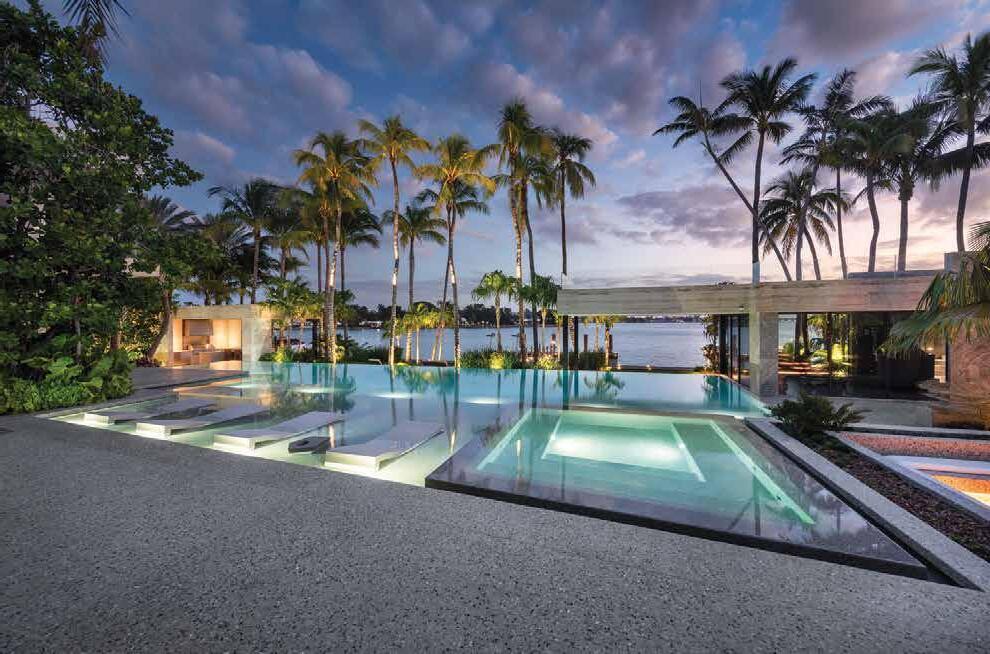
Indianapolis, IN Pittsburg, PA
Portland, OR

failed within 60 days, even under ideal conditions. “We followed every guideline—temperature, mixing, application—and still had delamination,” Barnett explained. “Switching to an epoxy system solved everything. Since then, we haven’t had a single failure.”
The Aesthetic Advantage
Beyond durability, porcelain’s biggest appeal lies in aesthetics. It opens creative doors that other materials simply can’t.
“You can create illusions—walls that look like wood, steel, or marble emerging from the water,” Barnett said. “People look at it and can’t believe it’s porcelain. That sense of wonder is part of the storytelling we’re trying to achieve in design.”
He has used porcelain to clad spas, pools, furniture, privacy walls, and even curved surfaces. A standout example is a perimeter overflow pool raised nine feet above grade.
“The entire exterior was wrapped in a three-millimeter Italian porcelain,”
Barnett explained. “It almost looks like slate, paired with green glass and gold epoxy grout. The porcelain even flexed around a bow-front radius. From ten feet away, it looks like one solid piece with almost no visible grout lines.”
This visual fluidity is what sets porcelain apart. Large panels eliminate the grid of grout lines that dominate traditional tile installations, giving pools a sleek, monolithic look.
What distinguishes Barnett from many of his peers is his willingness to share what he’s learned. “If I hadn’t had mentors early on, I would’ve failed,” he said. “That’s why I’m open about the mistakes we made. If I can help another builder avoid those pitfalls, it lifts the whole industry.”
He encourages builders interested in porcelain to start with education. “The NTCA [National Tile Contractors Association] offers regional classes specific to large-format panels. That’s where I’d begin,” Barnett advised. “After that, reach out to vendors
directly. Many of them will help connect you with training and the right products.”
His collaborative mindset extends even to competitors in Austin. “I get calls from builders a mile away asking for advice,” he said. “That’s fine with me. If they get it wrong, it hurts the client and reflects poorly on all of us. There’s enough business out there. We’re better off raising the bar together.”
So, will porcelain become mainstream in pool construction? Barnett thinks so—but it won’t happen overnight. “For large-volume builders, the learning curve and upfront investment can be intimidating,” he acknowledged. “But for those who take the time to train their crews, it’s one of the most dynamic materials available. I think within the next decade, we’ll see it adopted much more widely.”
Read the whole article:

He’s quick to add that porcelain isn’t reserved for high-end builds. “We’ve proven you can use it on an $80,000 pool just as effectively as a $500,000 one,” he said. “That’s why its potential impact is so broad.”
Looking forward, Barnett is intrigued by other materials, like acrylic, and concepts involving optical illusions in water features. But porcelain remains his central focus. “Porcelain works at every level of pool construction,” he emphasized. “That’s why I think it will have a bigger impact than almost anything else coming down the pipeline.”
For Barnett, continuous learning is non-negotiable. “If I’m not


sharpening my sword, I don’t feel like I’m doing justice to the industry,” he said. “Education has to be the foundation. That’s what allows us to innovate and redefine what’s possible in the backyard.”
As GBIV continues to blend artistry with technical expertise, Barnett’s
work with porcelain is proving that luxury pool design is about more than building beautiful spaces—it’s about pushing the industry forward.
“We’re just scratching the surface of what can be done with porcelain,” he said. “And I think that’s what makes this moment so exciting.”



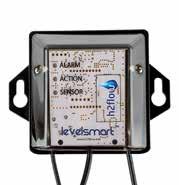









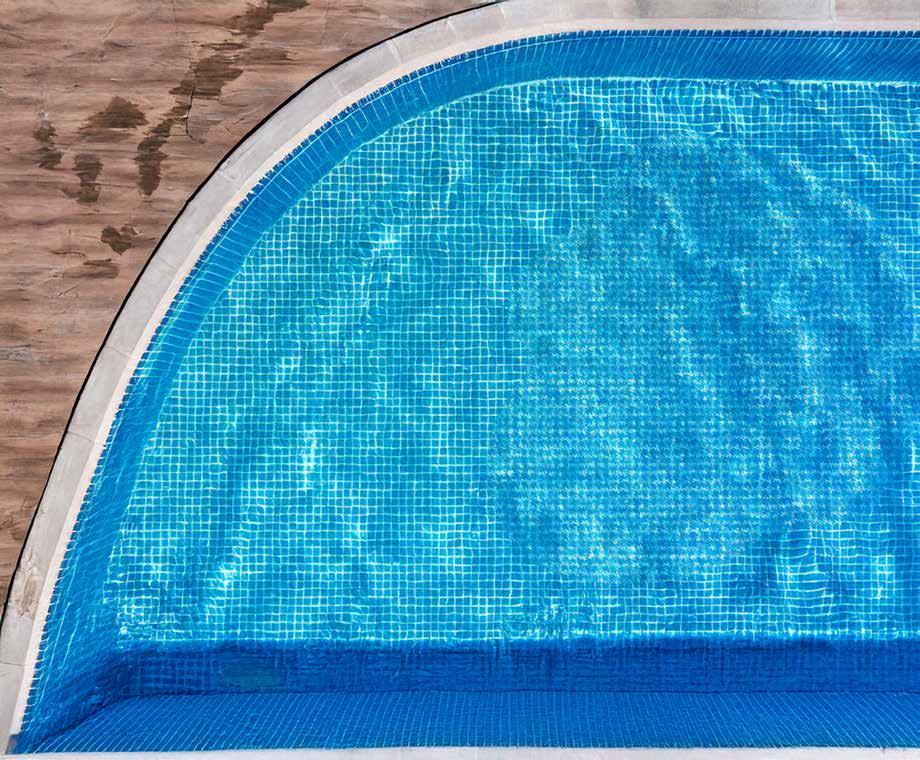

BY BRAD HOLLEY

Is it just me, or are swimming pools starting to look more and more like incredible works of art? I know you see it too, and I think there’s a really interesting reason we both feel this way.
I’m an Elder Millennial (or a “Geriatric Millennial”, if you want to be rude about it), and the narrative thrust upon us is all about how many industries we’ve “killed.” Everything from diamonds to Harleys, casual dining to golf. It’s all disappearing under our watch. But why isn’t anybody talking about the positive influence we’ve had on the culture of consumption? That’s deeply relevant to all those incredible pools we were just admiring. But before I explain, I first want to go back a generation for some context.
The Baby Boomers came to prominence as global industry and trade reached new heights. They were surrounded by an abundance of cheap goods from overseas. In this era, the pursuit of status was subtly oriented toward how much “stuff” you could acquire. As kids of Boomers, we benefited from this with an endless parade of Tamagotchis, Trolls, G.I. Joes, and Beanie Babies. But as we came of age, the horde of low-
cost goods just started to feel like… clutter.
And to be fair, this wasn’t just about people currently in their late 30s to 40s. It was everyone. People everywhere started to realize just how much junk their lives had been overrun with, and a recalibration of values began to happen. We started finding value in simplicity. We bought less. We bought with intention. We wanted fewer things. We wanted higher quality.
I’m so close to getting to my point, I bet you can almost taste it. But humor me with one more flashback. Remember the Renaissance? It brought us legendary artists like Leonardo da Vinci and Raphael Sanzio da Urbino—and all of the other Ninja Turtles we’ve come to know and love. Want me to summarize six whole YouTube documentaries about it in one paragraph? Too bad. I’m doing it:
A s both nation-states and independent dreamers alike invested heavily in exploration, research, and technological innovation, the world was filled with excitement and prosperity. Prosperity then led to the pursuit of finer things. And that’s when the artistic Renaissance exploded. Writers, artists, and thinkers all got fashionably
reacquainted with earlier Greek and Roman “masters.” They started reflecting on what it meant to “do great work,” how one could achieve it, and why it mattered in the first place. And this inspired several generations to strive for new heights of artistic achievement. And it’s here, dear friends, that we finally arrive at the core point.
Just like those Europeans from the Middle Ages, this newer generation of homeowners and builders is now experiencing a little Renaissance of their own. No, I’m not saying everyone is outside carving an alabaster statue of the perfect male figure in their backyard. I mean that our newfound focus on quality and experience is leading us toward higher-quality investments in our personal spaces.
I want to give credit where credit is due: the swimming pool industry, as we know it, was made popular by our parents and grandparents. And if you’re making a living in this market like I am, you have them to thank. But it wasn’t until recently that swimming pools started to become a higher art form.
On one hand, the industry itself was constantly raising the bar
of its own best practices, which meant higher costs and pushed the swimming pool further into exclusivity. But at the same time, consumers everywhere had become obsessed with individuality and superb quality. It was only natural that this would bleed into their swimming pools as well.
It was no longer exciting to have the same templated design that six of your neighbors had down the street. It was no longer acceptable to settle for plain white plaster and bullnose brick coping.
Throwing a couple of palm trees next to a boulder-stack waterfall just didn’t feel like the escape it once was. And all the freeform pools in the world started to feel like they lacked any real intention.
So, what was the response? Would-be pool owners grabbed
those templated designs, wadded them up, and tossed them into a wastebasket overflowing with phone books, AOL promotional CDs, and gift cards to Applebee’s. Buyers started demanding unparalleled craftsmanship in their outdoor spaces. And thanks to the innovative trailblazers in our industry, they’re getting it in spades.
Homeowners can ditch that boring pool interior and instead have Ray Corral (Mosaicist, Inc.) install a tile mosaic that would put the ancient Pompeii bathhouses to shame.
Tired of arbitrary pool shapes and sizes? Listen to Kirk Bianchi (Bianchi Design) explain how every pool should feature the esoteric yet pleasing principles of the Golden Ratio, proportion, and root rectangles.
Marvel at designers like Randy Angell (Randy Angell Designs), who channels mid-century masters like Frank Lloyd Wright and incorporates the beauty and grace of timeless architecture into pools and outdoor entertaining structures.
Every new project is a vote, and the poll results are in. Quality is the new virtue, and installing personalized outdoor works of art is how we “keep up with the Joneses” now. This is the new world of “less is more,” and as a designer who prioritizes thoughtfulness and attention to detail, I couldn’t be more pleased about it.

Read the entire article.


Few names in the world of glass tile carry the prestige of Bisazza. Since its founding in 1956 in Vicenza, Italy, the company has grown into one of the most respected producers of luxury glass tile. Its collections combine craftsmanship with bold, contemporary design, and its collaborations with top architects and designers have helped cement Bisazza’s reputation as a leader in decorative surfaces.
But nowhere does Bisazza shine brighter than in swimming pools. When submerged, its mosaics reflect and refract light in ways that create depth, shimmer, and movement. It’s an effect that has made Bisazza a favorite for homeowners, designers, and builders who want pools that transcend utility and become works of art.
To better understand Bisazza’s role in luxury pool design, Pool Magazine spoke with Jimmy Reed, president of Rock Solid Tile, and
BY JOE TRUSTY | PHOTOS: ROCK SOLID TILE
Frank Vitori, founder of AquaBlu Mosaics. Reed is widely recognized as one of the top installers of all-tile swimming pools in the country. Vitori, through his online distribution platform, connects homeowners and builders with premium brands like Bisazza every day. Together, they provided insight into what makes the brand special in water.
For Reed, Bisazza has long been the gold standard. “To me, Bisazza represents really the cream of the crop, glass mosaic surfaces,” he said. That reputation isn’t just about the tile itself, but the support he has received over decades of working with the company. “From the beginning, they’ve been there for me with enthusiasm and support. Connection and communication are a big thing to me, and Bisazza has always delivered that.”
From the retail side, Vitori
sees Bisazza’s appeal in how it resonates with pool buyers. “When customers ask for Bisazza, it’s usually for pools,” he explained. “They want those deep blues, aquas, and iridescent blacks that make the water look incredible.”
Part of the allure lies in the ability to customize. Reed noted that most of his Bisazza projects either draw from the Le Gemme series or involve custom blends. “Sometimes there are stock blends that fit beautifully,” he said. “But I like to tweak those stock blends just a little—add or take something away—to make it personal for the client.”
Vitori confirmed the same demand. “North America stocks well over 50 SKUs now, shipping out of New Jersey,” he said. “The real sellers are definitely the blends—dark blue, aqua, iridescent blacks. Higher-end clients don’t mind taking the time to customize. That aspect really appeals to them.”
Customization in pools is about more than color — it’s about how the pool interacts with its surroundings. Homeowners often want the water to mirror the sky, or for the surface to pick up tones from the landscaping and architecture. Vitori said it’s those desires that frequently drive specifiers to Bisazza: “People come to us with a vision. Maybe they want the pool to look like the Caribbean, or they want something dark and dramatic. Bisazza has the palette to make that happen.”
For many homeowners, the moment of truth comes when they first see water flowing over their chosen tile. Reed said that reaction is one of the reasons he continues to use Bisazza. “The excitement when the pool is finally filled — you can see it on their faces. The way the colors shift under water, it feels alive. It’s why we do this.”
Despite its luxury reputation, both men cautioned against assuming Bisazza is out of reach. “One misconception is that Bisazza is always outrageously expensive,” Reed said. “That’s not true. They have several lines at different price points. Some are very reasonable, and just as beautiful as the high-end series.”
Vitori agreed. “From a distributor’s standpoint, it’s a luxury product, but still quite achievable,” he noted.
Installing glass mosaics in a swimming pool is a demanding craft, and both Reed and Vitori were quick to point out the challenges that make proper technique essential.
Translucent glass, for example, can magnify imperfections. “Personally, I try to stay away from translucent,” Reed said. “Anything that happens under the glass is visible. It’s not a failure, but in a pool, every bubble and impurity is magnified. Technique matters—using the right products like Laticrete’s Litokol Epoxy and ensuring 100% coverage. But it’s still one more step of risk.”

But it’s not only about beauty on day one — longevity is where Bisazza proves its worth. Reed emphasized that poor installations can haunt homeowners years down the line, even when they’ve chosen a premium product. “It’s not just about how it looks when it’s finished. You want it to look that way ten, fifteen years later. If you don’t use the right products or if you rush the layout, it will come back to bite you.” With Bisazza, he explained, the material will stand the test of time, but only when paired with the right adhesives, grout, and craftsmanship to let it perform at its best.
Vitori agreed, adding that cutting corners is one of the most common mistakes he sees. “Some installers don’t take the time to get 100% coverage. Others don’t understand paper-face mounting. And when things go wrong, it’s not just cosmetic — it’s structural. That’s why experience matters so much with Bisazza.”
Bisazza’s range makes it suitable for everything from quiet elegance to bold artistry.
Seen here, the Damasco Opale design offered Reed a unique opportunity for creativity. “It was a dark blue and black mix, very bold,” Reed explained. “We redesigned the pool interior to accommodate it—making it shallower, changing transitions, creating a graceful slope. The result was striking, but still clean and beautiful.”
Asked about trends, Reed was confident that glass mosaics — and Bisazza in particular — aren’t going anywhere. “People always ask what’s next,” he said. “I don’t see glass mosaic tile ever going away. It’s a triedand-true medium for water features going back thousands of years. Large format glass and thin porcelain are coming on strong, but glass mosaics will stay in the lead. Bisazza has earned its reputation with installers in this regard.”
Vitori sees the same trajectory. “Customization, versatility, timeless beauty — Bisazza checks all the boxes for designers and homeowners looking to make a pool truly special.”


Crafting truly exceptional outdoor spaces demands a commitment to unparalleled quality and design. For luxury pool builders, landscape designers, and architects, the pursuit of portfolioworthy projects means looking beyond the standard, embracing innovations that elevate both aesthetics and functionality. This guide explores five premium upgrades that will not only captivate your clients but also set your work apart in a competitive market.
For projects destined to define luxury, the choice of interior finish is paramount. Glass tile offers an aesthetic and performance profile unmatched by conventional materials, ensuring your pool becomes a radiant centerpiece.
The defining characteristic of glass tile is its unrivaled brilliance and luminosity. Unlike plaster or even standard porcelain, glass inherently captures and refracts light, creating a dynamic interplay of shimmer and sparkle that
BY JAMIE BRINKMAN PHOTOS COURTESY: AQUABLU MOSAICS
imbues the water with breathtaking depth of color. This optical quality is unique to glass, delivering a visual spectacle that instantly communicates bespoke luxury.
Beyond its captivating beauty, glass tile boasts exceptional durability, making it a discerning choice for high-end installations. It’s impervious to chemical degradation, staining, and fading, guaranteeing the pool’s pristine appearance for decades. Its non-porous nature also resists mold and mildew, simplifying maintenance and ensuring a hygienic environment—a crucial consideration for sophisticated clients. This resilience protects your client’s investment and upholds the long-term integrity of your design.
The true artistry of glass tile, however, lies in its limitless bespoke mosaic possibilities. This is where your creative vision can truly flourish, transforming a pool into a personalized masterpiece. From custom color blends and gradients to intricate designs directly within the pool basin, the potential for personalization is immense. For signature projects, consider custom murals for feature walls that provide a breathtaking focal point.

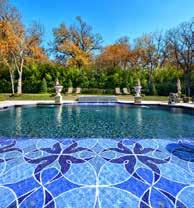

An exceptional finish demands the best foundation. Just as you wouldn’t equip a high-performance luxury vehicle with inferior components, a premium glass tile installation requires the very best in waterproofing and adhesive systems. Installation products are as critical as the tile itself in safeguarding your client’s investment and your project’s reputation. Compromising can lead to costly failures that undermine even the most exquisite tile work.
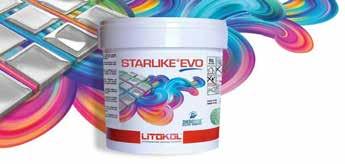
Premium brands like SICIS, Bisazza, and Murrine Mosaics specify Litokol products in their installation guides. Italian-made Litoelastic thin set and Starlike EVO grouts offer 150+ colors for seamless matches or bold contrasts, while advanced epoxy formulas deliver waterproofing, bond strength, and durability against pool chemistry and temperature shifts.

The pool deck is a pivotal design opportunity, bridging your home with the outdoor living area. Elevating this area with 2CM porcelain pavers and coping provides a transformative upgrade, delivering unmatched durability and unrivaled design possibilities that will define the sophistication of your outdoor living spaces. Engineered specifically for demanding exterior applications, these pavers blend robust performance with exceptional aesthetic versatility.

The design flexibility of 2CM porcelain is truly remarkable. For clients seeking coastal elegance, realistic wood grain looks in porcelain evoke the warmth of natural timber without the associated maintenance challenges.

Beyond aesthetics, 2CM porcelain pavers offer unmatched practicality. They’re virtually indestructible, resisting stains and fading without the need for annual sealing. The result is effortless upkeep.

Luxury pools demand furnishings that match in quality and comfort. Studio Redrock In-Pool Loungers, made from glass fiber reinforced concrete (GFRC), embody this standard—solid, durable, and made in the USA. At 165 lbs each, they resist shifting and weather. With Sunbrella headrests, stainless fasteners, and customizable colors, they blend sculptural beauty, resilience, and bespoke design for resorts and upscale homes.
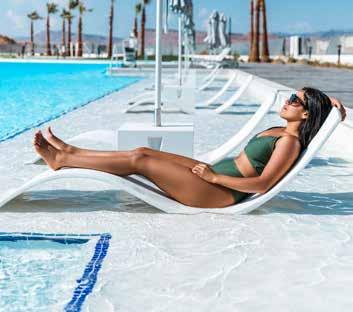
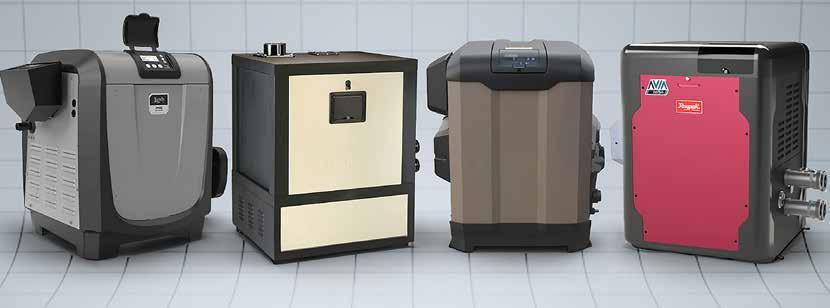
As the 2025 summer swim season draws to a close, homeowners and professionals alike are prioritizing comfort, efficiency, and reliability when it comes to heating their pools. Advances in technology mean that whether you choose a gasfired heater or an electric heat pump, there are more high-performance, energy-conscious options than ever.
At Pool Magazine, we’ve evaluated the leading pool heaters and heat pumps on the market this year to give you a comprehensive look at the models delivering the best mix of performance, durability, and value. Drawing from manufacturer updates, consumer feedback, and U.S. Department of Energy guidance on pool heating, this list covers the toprated pool heaters and heat pumps for 2025.
Pentair ETi® 400 High-Efficiency Pool Heater
Pentair’s ETi® 400 is nothing short of revolutionary in gas-fired pool heating. Boasting a blazing 96% thermal efficiency, it’s the highest in its class.
At 400,000 BTUs, this model brings serious power to the table, rapidly delivering warm water for both pools and spas. Its Titan-Tough™ direct-fire titanium heat exchanger is built to last—designed for extreme durability and superior resistance to corrosion—making it a long-term workhorse in harsh water conditions.
Hayward Universal H-Series HC — Dual Fuel 400k BTU
Hayward’s Universal HC Series combines sheer power with a footprint that’s the smallest in its class. Delivering 400,000 BTUs, it can heat even large pools and spas quickly, and its dual-fuel capability makes it easy to switch between natural gas and propane depending on availability. Designed for maximum flexibility, the heater requires zero wall clearance, and a reversible top gives installers more options when space is tight.
The Jandy JXiQ™ raises the bar for smart, reliable pool heating. With auto-sensing dual-voltage capability, it seamlessly adapts to the power supply without manual configuration—no jumper cards, no wiring changes.
BY MARCUS PACKER

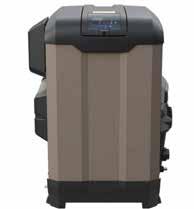

Raypak AVIA HD with NiTek™
The Raypak AVIA HD with NiTek™ redefines durability and control in gas-fueled pool heating. With an 84% thermal efficiency and flexible venting options, it delivers powerful, consistent warmth for pools and spas. Raypak’s proprietary NiTek™ heat exchanger offers up to 300% greater erosion resistance.

Jandy VersaTemp Heater/Chiller™
Delivers year-round comfort with smart thermo control to heat or cool your pool. Quiet performance with SoundShield™ Technology and reliable operation even below 50°F. Featuring dual thermostats, LCD display, and iAquaLink® integration, VersaTemp™ combines efficiency, versatility, and modern control in one unit.

Pentair UltraTemp® High Performance Pool Heat Pump
The Pentair UltraTemp® delivers top-tier efficiency and reliability with a design that homeowners and installers both appreciate. At its core is a rugged alltitanium heat exchanger with a lifetime warranty, built to resist corrosion and endure even the harshest pool environments.
Hayward HeatPro® MCHX Series Heat + Chill
Hayward’s HeatPro® MCHX Series sets a new benchmark in versatility and durability for pool heating and cooling. Featuring groundbreaking microchannel heat exchanger technology, it delivers quicker temperature control with significantly improved heat transfer and reduced refrigerant usage.
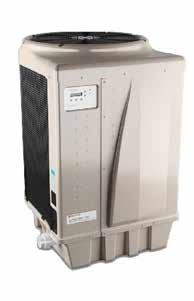
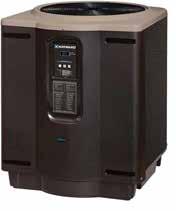
Crosswind V Heat Pump
The Raypak Crosswind V delivers efficient heating in a sleek, compact design. Its titanium heat exchanger resists corrosion for lasting performance, while builtin Wi-Fi and Raymote app control add modern convenience with reliable comfort season after season.
AquaCal HeatWave SuperQuiet®
The AquaCal HeatWave SuperQuiet® sets the industry standard for quiet, efficient pool heating—and cooling. At its heart lies the patented ThermoLink® titanium heat exchanger, built for exceptional durability and corrosion resistance. Designed with a flow-friendly hydraulic layout, it adds only 2 PSI at standard flow rates, making it uniquely compatible with variablespeed pumps.




The hot tub market continues to prove its resilience, with steady demand across residential and commercial segments. What was once considered a niche luxury has now become a standard amenity, fueled by advancements in hydrotherapy, design, and energy efficiency. The category’s top-selling brands have carved out loyal followings by delivering products that balance innovation with reliability—traits that keep customers coming back and retailers confident in their offerings.
For industry professionals, keeping pace with these shifts is critical. Buyers today expect spas that do more than provide warm water and jets; they want streamlined water care, smarter technology, and flexible models that fit a variety of budgets and spaces. Manufacturers that anticipate these needs are shaping the competitive landscape, while those slow to adapt risk being left behind.
This recap looks at the nine brands currently setting the pace in hot tub sales. Each has earned its position by combining performance, consumer satisfaction, and serviceability in ways that resonate with the market.
Hot Spring Spas – Grandee (Highlife Collection)
The Grandee is Hot Spring’s flagship model with an open, 7-person layout, two patented Moto-Massage DX jets, and the FreshWater Salt System. Includes advanced EnergySmart insulation and touchscreen control.
www.hotspring.com
Sundance Spas – Optima (880 Series)
Optima is a top seller, offering room for 6–7 adults, a full-body ergonomic lounge, and Fluidix jets including AccuSsage™ and foot dome for targeted therapy. Includes the ClearRay UV-C sanitation system, MicrolClean Ultra II filtration, and ambient LED lighting.
www.sundancespas.com
Bullfrog Spas – A7 (A-Series & M-Series)
Bullfrog’s standout is the JetPak Therapy System—modular jet packs. The A7 is mid-sized with premium corner captain’s chairs for 6–8 adults. The M-Series has upscale styling, audio systems, and touchscreen controls.
www.bullfrogspas.com
BY MARCUS PACKER



Caldera Spas –Martinique & Cantabria
The Martinique (Paradise Series) is a mid-priced favorite for five adults, with ergonomic seating and good hydrotherapy features. The flagship Cantabria (Utopia Series) seats eight and offers 74 powerful jets and massage technologies like the UltraMassage lounge and Atlas Neck system.
www.calderaspas.com
Dimension One SpasJourney
Known as the “hangout tub,” the Journey is compact yet social— seating four comfortably. It offers 20 jets, a barrierfree seating design, and ClearZone PRO water purification for clarity and low maintenance.
www.d1spas.com
Master Spas – Balance 7 (Clarity Series) & LSX 900
The Balance 7 is Master’s bestselling, mid-range model, featuring 6 seats, ergonomic design, and a contour lounge. The LSX 900 is a luxury flagship for eight users, boasting Bio-Magnetic Therapy, advanced jets, and lavish lighting.
www.masterspas.com

Arctic Spas - Summit
A best-selling spa brand in Canada, the Summit is built for cold climates and seats six to seven adults. With triple-layer insulation, weatherresistant construction, and customizable jet and pump options, it delivers efficient warmth and lasting hydrotherapy comfort even in harsh winter conditions.
www.arcticspas.ca
Catalina SpasBerkshire

While Catalina doesn’t crown one model, the Berkshire often leads in dealer promotions. It comfortably seats six, delivers powerful and reliable jet performance, and features vibrant LED lighting—all offered at a consistently strong value.
www.catalinaspas.com
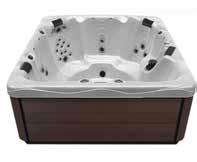
Marquis Spas – Euphoria & Summit
From the Crown Collection, Euphoria seats seven with high-output jets, ergonomic design, and refined styling. The Summit variant offers flexible seating and advanced jet layouts typical of Marquis’ luxe offerings.



www.marquisspas.com Read the whole article...


BY MARCUS PACKER } PHOTO: REUTERS
An evening of fun aboard the Icon of the Seas turned into a frightening ordeal when one of the ship’s premier water attractions malfunctioned. A guest riding the Frightening Bolt waterslide was injured after a section of acrylic glass on the slide shattered, causing water to pour out and exposing a gaping hole in the slide tube.
The shocking event quickly spiraled into chaos as passengers scrambled to alert crew members and stop the ride. Video footage recorded by onlookers captured the moment the transparent panel gave way, sending a torrent of water spraying onto the deck below and triggering screams from guests nearby. “Stop the slide! Stop the slide!” could be heard echoing as water rushed from the breach.
The Guest’s Ordeal
“Our team provided medical care to an adult guest when acrylic glass broke off a water slide as
the guest passed through the slide,” a Royal Caribbean Group spokesperson said in a statement.
“The guest is being treated for his injuries. The water slide is closed for the remainder of the sailing pending an investigation.” The guest is in stable condition.
The rider, whose identity has not been publicly released, suffered cuts to his legs and hands. Eyewitnesses noted that the man had blood on his arms and legs and appeared to be shaken but conscious. Fortunately, the slide’s design and the incident’s location prevented the guest from falling through the hole. However, the visual of the broken acrylic and pouring water rattled passengers and raised serious concerns about onboard safety.
The Frightening Bolt is no ordinary water slide. At 46 feet tall, it’s the tallest waterslide at sea and a signature attraction aboard the
Icon of the Seas, known for its thrilling trapdoor-style drop and enclosed 360° loop. Constructed with colorful opaque sections and clear acrylic portions, the slide is designed to give riders moments of excitement as they zoom through transparent sections with sweeping views of the ship and ocean below.
It was one of those acrylic portions that catastrophically failed during the ride, giving way as the guest passed through. The cause of the failure has not been disclosed, but the incident raises important questions about the structural integrity of clear slide materials under repeated stress, salt exposure, UV light, and the highvelocity water pressure common in cruise ship attractions.
The slide was immediately shut down following the incident and remained closed for the remainder of the voyage. A full investigation is underway, and it is expected that other slides in the Thrill Island waterpark will be inspected as a precaution.
Failures involving acrylic components in cruise ship waterslides are extremely rare. These structures are typically engineered to withstand significant stress—hydraulic pressure, UV exposure, salt air, and daily high-volume usage. Still, as highlighted by the recent incident aboard Icon of the Seas, no material is immune to failure without proper maintenance, inspection, and design safeguards.
Jason Jovaag, owner of Hammerhead Aquatics, has inspected slides of this nature before—including high-profile installations featuring extensive acrylic elements. Drawing from his experience, he notes that this type of failure is “not something you see often, especially on such a new vessel.”
“The acrylic has to be of a high quality and highly engineered,” Jovaag said. “I had the pleasure of working with the Disney Magic ship to inspect the original acrylic slide known as the AquaDunk. I did that inspection back in 2013 while the ship was in port. That slide is still in service today and still giving guests an amazing experience.”
He also noted a key difference in materials and scale between the two installations.
“The Disney Cruise Line uses USA-made acrylic manufactured by Reynolds Polymer Technology,” Jovaag explained. “And the Disney ship has about ten times the amount of acrylic on it than the one that just failed. Their slide wraps around the entire length and width of the ship and even cantilevers out over the side. That’s a serious structural feat—and it’s held up for over a decade.”
While the exact brand of acrylic used in the Icon of the Seas slide has not been confirmed, Jovaag’s comparison underscores a broader truth: acrylic elements in cruise ship waterslides are known to be incredibly durable when properly designed, manufactured, and maintained.
This latest failure—occurring on a slide less than a year into service—raises legitimate concerns about engineering oversight, manufacturing standards, or potential installation flaws. However, experts emphasize that this should be viewed as an anomaly rather than evidence of a systemic problem within the industry.

Read the entire article.






Want to make a splash in the pool and spa industry but don’t know quite the right words to say?
Rely on the wordsmiths at PoolMagazine. com to custom craft and distribute your press release to the entire pool and spa industry. Our expert writers can custom craft just the right words to help you convey important news updates as well as, press releases pertaining to new product launches, new hires, and important events.
Rely on the wordsmiths at Pool Magazine to custom craft and distribute your press release to the entire pool and spa industry. Our expert writers can custom craft just the right words to help you convey important news updates as well as press releases pertaining to new product launches, new hires, and important events.


BY SUSIE CUEBAS
IBY GENESIS (PHTA
f you run a pool service business, chances are you’ve lost customers without ever knowing why. Most pool customers don’t post a bad review. They won’t call to complain. They don’t give you a chance to make it right. They just leave.
According to a comprehensive 2025 survey from PissedConsumer. com, this is not an anomaly. It’s the norm. More than half of the 40,000+ consumers surveyed said they never received any response at all from the companies they contacted for help. And that silence—on both sides—can be costly.
For pool professionals, where reputation, referrals, and reliability are everything, these findings are a wake-up call. This isn’t just a customer service issue—it’s a customer retention issue. When pool companies fail to respond to issues or follow through on service complaints, they lose more than
just a sale—they lose trust, loyalty, and long-term revenue.
One of the most striking insights from the PissedConsumer.com study is how often consumers don’t bother to complain. They simply vanish.
In a service industry like ours, that silence is deadly. Pool customers rarely fire off a warning shot. They’re busy people. If they don’t feel heard or valued, they’ll ghost your business just as fast as they hired you. The data shows that 58.3% of consumers never hear back from customer service after submitting a concern. No phone call. No email. No effort.
That kind of disengagement is a huge red flag. It shows how easy it is to lose a client simply by failing to follow up. And yet, many pool
businesses don’t even know it’s happening.
Think about it from the customer’s perspective. They’ve already paid you. You’re in their backyard. Their expectations are high, and their tolerance for inconvenience is low. If something goes wrong—whether it’s cloudy water, a missed service day, or an unexplained charge— they may give you a chance to fix it. But if you don’t respond quickly or respectfully, you’re probably not getting another shot.
According to the survey, only 26.1% of consumers said companies offered a resolution to their issue. Even when a response was provided, 61.2% were still unsatisfied with the solution.
So it’s not just about showing up— it’s about how you show up.
Half-hearted responses, passing the buck, or ignoring issues altogether drive even loyal customers to leave quietly—and potentially tell others to do the same.
Ignoring a customer doesn’t just mean losing that one person’s business. It means risking negative word-ofmouth, bad reviews, and missed referrals—all critical components of a successful pool business.
More than 31% of negative online reviews happen because customers want to warn others about their bad experiences. They aren’t venting for the sake of it. They’re trying to protect their neighbors, friends, and communities from having the same issue.
And in a hyperlocal service market like pool cleaning, maintenance, and repair—reputation is currency.
On the flip side, when companies do respond and resolve issues, the effect is dramatic. According to the same study:
30% of respondents said they’d consider staying with a company that resolved their complaint. 41% of customers who received a satisfactory email support experience said they’d definitely use the company again.
In many companies, customer service is treated like a cost center. But in service-based industries like pools, it’s your retention engine. Without it, you’re constantly chasing new customers to replace the ones silently walking away.
Here’s how to make that shift stick:
1. Empower field techs to make on-the-spot fixes without having to “check with the office.”
2. Create a shared inbox for all customer communication so nothing slips through the cracks.
3. Set internal KPIs for response times—email within 24 hours, phone calls within the hour.
4. Celebrate “save stories” internally—when someone wins back an unhappy customer, treat it like a sale.
The biggest mistake a pool business can make is assuming no news is good news. In the pool industry, silence shouldn’t be mistaken for satisfaction. Reach out, connect, and you’ll turn quiet customers into loyal ones—and loyal customers into lasting growth.
Read the entire article...



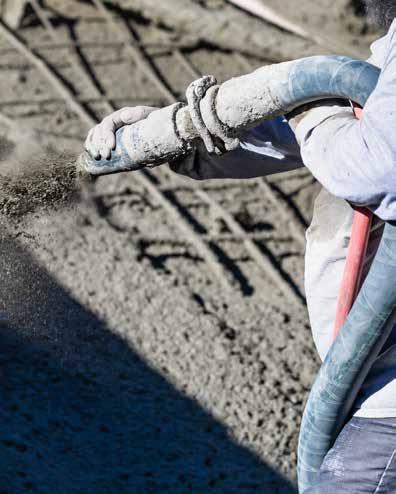

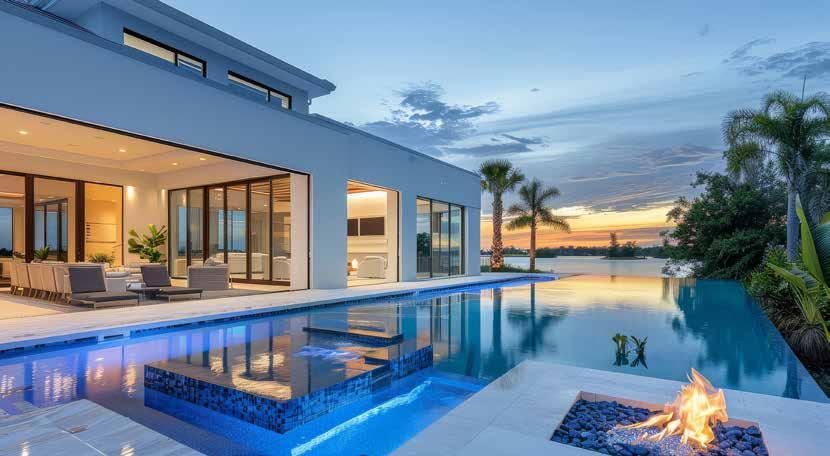
BY JOE TRUSTY | IMAGE: AI GENERATED
When it comes to pitching clients on the dream of adding a swimming pool to their backyard, a picture is really worth a thousand words. And in today’s world of AI-powered design tools, that picture can be generated in seconds. But which rendering engine delivers the most stunning, realistic visuals for pool and landscape designers?
1. Google Veo 3 – Best Overall for Photo-Realism
Veo 3, Google’s next-gen video and image generation AI, produces renderings that are almost indistinguishable from real life. Whether you’re generating images of a modern poolscape with sleek travertine decking or a lush tropical oasis complete with swaying palms,
Veo nails the realism. Lighting, reflections, textures, and even subtle environmental details feel cinematic. - https://deepmind. google/models/veo/
2. Sora – Runner-Up for Realism with Stylized Flair
Sora, OpenAI’s powerful video and image generation engine, isn’t far behind. It shines with cinematic depth and stylized realism. While it doesn’t quite hit the raw photographic accuracy of Veo, it delivers results that feel like something out of a luxury real estate magazine. Sora’s strength lies in its ability to capture mood and tone—think golden hour lighting, dramatic angles, and atmosphere. - https://sora.chatgpt. com/explore
3. Leonardo – Solid Option (3D & Photo-Realistic Rendering)
Leonardo has become a favorite among pool designers looking to quickly generate images with 3D visual style. It produces renderings that resemble the look of today’s popular design software. While it doesn’t offer the level of detail that Veo and Sora do, Leonardo delivers useful, clean, and photo-realistic visuals. - https://leonardo.ai
Honorable Mentions: Other Notable AI Modeling Engines
For benchmark testing, we used the same set of prompts across all three platforms, evaluating both image and video rendering. While some engines were faster than others, our focus wasn’t speed—it was the quality of the final output. Several other AI models are certainly worth mentioning:
MidJourney
Great for conceptual sketches and stylistic mood boards, but not specifically tailored for outdoor realism. - https://www.midjourney.com
Solid for advanced pool concepts but still struggles with complex perspective, depth, and realism - https://openai.com/index/dall-e-3/
Runway ML
Strong in video generation and editing tools, good for presentations but not the best in still image realism. - https://runwayml.com/
Stable Diffusion
With the right model training, Stable Diffusion can deliver impressive results, but it requires technical skill and patience. - https://stability.ai
One of the most overlooked factors in achieving jaw-dropping AI-generated designs? The quality of your prompt. You’ve probably heard the phrase “Garbage In, Garbage Out” before— nowhere does it apply more than in AI rendering. The tools are powerful, but they’re not mind readers. What you put into your prompt directly affects what comes out. If your results feel generic, inconsistent, or off-target, chances are your prompt was too vague.
AI rendering engines don’t interpret your intent—they interpret your words. Without clear guidance, the AI fills in the gaps with random guesses, which often leads to:
1. Incorrect pool shapes
2. Unnatural lighting
3. Inaccurate materials
4. Misplaced features (like deck jets spraying into nowhere)
Getting hyper-specific is the difference between a polished, professional rendering… and something that looks like a Minecraft mod gone wrong. Google Veo 3, Sora, and Leonardo do an excellent job of polishing prompts to produce higher-quality visuals.
Another up-and-coming platform that launched in September is MyPoolDesigner.ai, a web app developed by PoolMarketing.com that offers greater customization and versatility in the image and video generation process.
AI isn’t just a novelty—it’s quickly becoming a core part of the modern pool designer’s toolbox. Across the industry, professionals are embracing all sorts of AI applications as a way to speed up their workflow, improve their operations, sharpen their presentations, and ultimately close more deals. Designers can now generate multiple concepts in real-time, adjusting for client preferences on the spot. Want to try different tiles, change the pool shape, or see what a cabana looks like added to the layout? AI makes this easy—no 3D modeling experience required.
Many are pairing AI tools with client-supplied backyard photos to create customized, hyper-realistic previews. AI is helping bring designs to life early in the process, getting clients emotionally invested before breaking ground. AI also enables back-and-forth collaboration, both internally between design team members and externally with clients. Prompt-based design sessions allow for rapid iteration and buy-in, a game-changer for boutique firms and solo designers alike.
As powerful as these tools are, there’s still a big gap between concept and construction. And that gap is critically important to understand. These platforms are excellent at producing visual inspiration, but they don’t:
1. Respect engineering tolerances
2. Account for grade or drainage
3. Provide scale drawings with accurate measurements
4. Output technical specifications for plumbing, electrical, or structural work
5. Consider code compliance or zoning restrictions
None of that can currently be handled by AI image generators. For that, professionals still rely on vetted design software. AI can show you what it might look like, but it can’t yet tell you how to build it or produce accurate design plans a builder can use.
Designers today are using AI not just to illustrate ideas, but to elevate their design presentations, speed up collaboration, and deliver a more engaging client experience. Just don’t mistake a pretty picture for a finished plan. AI won’t replace licensed design professionals or engineered design plans anytime soon, but it’s getting closer to becoming a more useful component for those who can leverage it as part of their toolkit.

Read the entire article.

John’s knees and back ache. After nearly three decades of cleaning filters, lifting equipment, and braving triple-digit temperatures, he’s finally thinking about retirement. But there’s one big problem — John never planned for it. He spent his career focused on his customers — keeping pools clean, equipment running, and business steady. But he gave little thought to retirement along the way. Now 55, with no 401(k), no exit plan, and no real savings to speak of, John’s wondering if he’ll ever be able to slow down.
If you work in the pool and spa industry — whether servicing routes, managing crews, or building backyard escapes — chances are you didn’t get into this line of work for the financial planning. But the truth is, it’s never too early (or too late) to start saving for your future.
BY JOE TRUSTY
Whether you want to retire at 55 with $1 million in the bank or just build a cushion that gives you freedom later in life, smart planning today can make all the difference.
You’ve spent years in the sun performing physically strenuous work and servicing your customers. The work is tough, the hours are long, and most days, you’re too busy running to the next job to worry about what happens 20 or 30 years down the road.
But here’s the hard truth: no one plans to stay building or servicing pools well into their 60s — they just never planned not to.
What if you could break that cycle? What if retiring with $1 million in savings wasn’t just a pipe dream, but a goal you could actually hit — even if you’re just getting started? In this article, we’ll show you exactly what it takes to retire from
the pool industry with real money in the bank. From how much to save each week, to what accounts to use, and the common mistakes that hold too many pros back.
The Million-Dollar Question: How Much Should You Save?
A ssuming an average return of 7% annually (a realistic longterm expectation with diversified investments like an index fund), here’s what the math looks like:
Goal: $1,000,000 by age 55
Starting Age: 25
Years to Invest: 30
Weekly Savings: $160 per week
That adds up to about $625–$640 per month. Thanks to compound interest, where your investment gains start earning gains, the earlier you start, the less you need to save.
Compound interest is the process where your money earns interest — and then that interest earns interest. Over time, this snowball effect can turn modest weekly savings into major retirement gains.
For example, saving $160 per week for 30 years at 7% annual return would grow to over $1 million. If you waited until age 35, you’d need to save over $340 per week to hit that same goal by 55.
Let’s say inflation averages 3% annually over the next 30 years — that $1 million would only be worth about $412,000 in today’s dollars.
So if you want $1 million in future dollars to maintain today’s buying power, you actually need to aim higher — closer to $2.4 million in nominal dollars.
To meet that inflation-adjusted goal by 55:
Savings Needed: $375–$400/week
Estimated Monthly: $1,500–$1,600/month
This is where financial planning becomes essential — especially for business owners.
Want to retire with $1 million by the time you’re 55? The earlier you start, the less you need to save — thanks to compound interest.

Assumes a 7% annual return with consistent monthly contributions with reinvested returns and no withdrawals during the investment period. Tip: The earlier you start, the less you need to save — compound interest does the heavy lifting.

If you’re self-employed or run your own pool business, the traditional 401(k) route might not be available — but you’ve actually got even better options. Whether you’re looking for tax advantages, high contribution limits, or just a simple way to start saving, here’s a breakdown of the most effective retirement accounts tailored for service and construction pros:
1. Starting out? A Roth IRA is a great first step with taxfree growth and simple setup.
2. Running your own crew? A Solo 401(k) gives you the most flexibility and room to grow.
3. Need something easy? A SEP IRA is low-maintenance and allows big contributions fast.
4. Want flexibility without limits? A Brokerage account gives you options, but less tax help.
Many in the pool industry delay retirement planning, assuming they’ll work forever or sell their business someday. Common pitfalls include:
1. Not separating personal and business finances
2. Underestimating how much you’ll need
3. Ignoring inflation and healthcare costs
4. Waiting too long to start investing
5. Relying solely on Social Security or business value
Without a clear plan, you may find yourself working into your late 60s or 70s — not because you want to, but because you have to.










Send us your concept drawing for review and our design team will make recommendations.

Custom Stainless Steel & Copper Aquatic Products
RESIDENTIAL COMMERCIAL HOSPITALITY
Spas Swimming Pools Acrylic-Walled Pools & Spas
Energy-Efficient Portable Spas Swim Spas Tile-ready Pools & Spas Water Features
Cold Therapy Plunge Pools Luxury Custom Indoor & Outdoor Bath Fixtures
SPECIALIZING IN ELEVATED / ROOFTOP POOL & SPA INSTALLATIONS
LIGHTWEIGHT & DURABLE
SOPHISTICATED ARTISTIC SUSTAINABLE

D i a m o n d S p a s P o o l s